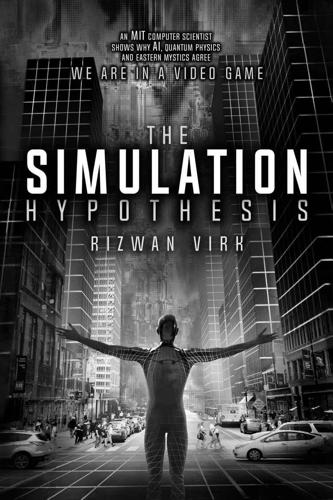
The Simulation Hypothesis
by
Rizwan Virk
Published 31 Mar 2019
This brings us to the idea of quantum entanglement. This is when two particles become “entangled,” meaning it is theoretically possible from the state of one particle to guess the state of the corresponding entangled particle instantaneously, even if it is far away. Einstein called this “spooky action at a distance” but it has been shown to be a real phenomenon. Quantum entanglement seems to have the capacity for instantaneous communication across light years—which means that information would go from one part of our world to another faster than the speed of light. While physicists admit that quantum entanglement exists and is being used in applications like quantum cryptography, there is still plenty of debate about whether two entangled particles actually constitutes sending information from place A to B faster than the speed of light.
…
If these findings are extended from the scaled-down, “toy universe” that the team used in these experiments to our physical universe, then finding error-correcting codes could be the smoking gun, if you will, of evidence for the universe being simulated on some type of computer. Quantum Entanglement and Simulation Quantum entanglement itself is a mysterious property of quantum physics that physicists are unable to explain. As mentioned earlier, even though it was the result of a paper that Einstein coauthored with Rosen and Podolsky, Einstein himself derided the idea as “spooky action at a distance.” Since then, there has been confirmation that quantum entanglement exists, and it has even been used in the new field of quantum cryptography. Quantum cryptography relies on the strange property that if the quantum field is collapsed (by a particle or qubit being read or observed), then the other entangled particle (or qubit) will also be affected.
…
Some Unexplained Areas: God, Angels, NDEs, and UFOs 218 God and The Creation of the Physical World God and the Afterlife Angels AI: Gods and Angels and the Simulation Hypothesis Near-Death Experiences UFOs The Fermi Paradox Jung and Synchronicity OBEs, Remote Viewing, Telepathy and Other “Unexplained” Phenomenon Part IV: Putting it All Together 245 Skeptics and Believers: Evidence of Computation 246 The Categories of Arguments/Experiments A Quick Note About Metaphysical Experiments and Consciousness The Skeptics: The Resource Argument Evidence of Conditional Rendering Experiments for Evidence of Pixels Evidence of Computation: Error-Correcting Codes Quantum Computers, Error Codes, and Quantum Entanglement Quantum Entanglement and Simulation Fractals and Evidence of Computation in Nature Simple Programs and A New Kind of Science Conclusion—the Search for Evidence of Computation The Great Simulation and Its Implications 269 Plato’s Allegory of the Cave and the Simulation Hypothesis What is the Great Simulation and Who Runs It?
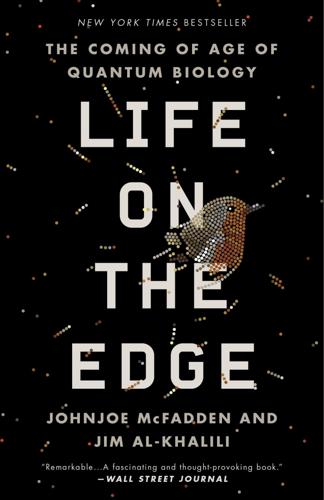
Life on the Edge: The Coming of Age of Quantum Biology
by
Johnjoe McFadden
and
Jim Al-Khalili
Published 14 Oct 2014
Schulten proposed that pairs of free radicals generated by a process known as a fast triplet reaction could have their corresponding electrons “quantum entangled.” For subtle reasons that should become clear later on, such a delicate quantum state of the two separated electrons is highly sensitive to the direction of any external magnetic field. Schulten then went on to propose that the enigmatic avian compass might be using this kind of quantum entanglement mechanism. We haven’t mentioned quantum entanglement yet because it is probably the strangest feature of quantum mechanics. It allows particles that were once together to remain in instant, almost magical, communication with each other, despite being separated by huge distances.
…
And it is indeed this spooky action at a distance that so often intrigues “quantum mystics” who make extravagant claims for quantum entanglement, for example that it accounts for paranormal “phenomena” such as telepathy. Einstein was skeptical because entanglement appeared to violate his theory of relativity, which stated that no influence or signal can ever travel through space faster than the speed of light. Distant particles should not, according to Einstein, possess instantaneous spooky connections. In this, Einstein was wrong: we now know empirically that quantum particles really can have instantaneous long-range links. But, just in case you are wondering, quantum entanglement can’t be invoked to validate telepathy.
…
Both scientists stayed for the remainder of the conference and then returned to their respective homes to write their own papers (Schulten’s appeared just a little before Michel-Beyerle’s) describing the discovery that the weird property of quantum entanglement can indeed influence chemical reactions. Schulten’s 1976 paper15 proposed that quantum entanglement was responsible for the speed of the exotic fast triplet reactions studied in the Max Planck laboratory; but his groundbreaking paper also presented Staerk’s experimental data, which clearly showed that the chemical reaction was sensitive to magnetic fields.
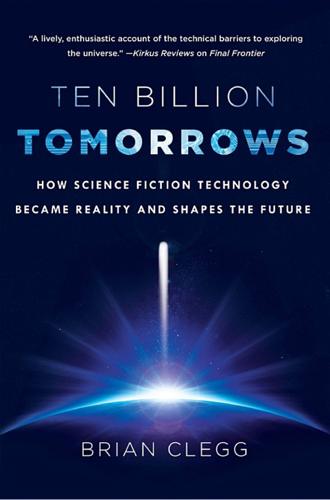
Ten Billion Tomorrows: How Science Fiction Technology Became Reality and Shapes the Future
by
Brian Clegg
Published 8 Dec 2015
In principle, a usable time shift could be made if the barrier were much bigger—but the bigger the barrier, the fewer photons that get through, and for anything other than a tiny shift in time, nothing gets through at all. There is another quantum phenomenon that does not suffer from the limitations of tunneling and that bears a much closer resemblance to the hypothetical mechanism of the Dirac transmitter. This is quantum entanglement. Just like Blish’s imagined connection between a positron and an electron, quantum entanglement means that two particles can influence each other at any distance—and all the evidence is that this effect is instantaneous. In principle you could separate a pair of entangled particles to opposite sides of the universe and a change in one will be instantly reflected in the other.
…
Y Chiao, “Signal Velocity, Causality, and Quantum Noise in Superluminal Light Pulse Propagation,” Physical Review Letters 86 (April 2001): 3925–29. For a summary of superluminal tunneling from the Nimtz viewpoint, see Horst Aichmann and Günter Nimtz, “The Superluminal Tunneling Story,” at arXiv:1304.3155 [physics.gen-ph]. Information on quantum entanglement from Brian Clegg, The God Effect (New York: St. Martin’s Griffin, 2009. The details of Nick Herbert’s instantaneous quantum entanglement communicator are in David Kaiser, How the Hippies Saved Physics (New York: W. W. Norton, 2011), pp. 209–14. Information on the entangled cat photograph is from Gabriela Barreto Lemos, Victoria Borish, Garrett D. Cole, Sven Ramelow, Radek Lapkiewicz, and Anton Zeilinger, “Quantum imaging with undetected photons,” Nature (2014), doi: 10.1038/nature13586.
…
Quantum teleportation makes use of a special feature of quantum physics to get around something called the no-cloning theorem. This says that you can’t make an exact copy of a quantum particle—so the trick in The Prestige would (thankfully) never be possible. The feature making teleportation possible is quantum entanglement, arguably the weirdest aspect of physics. There are ways to produce pairs of quantum particles that are linked to each other in a remarkable way. These entangled particles are so closely linked that you could, in principle take one of a pair to the opposite side of the universe, and a change in one would instantly be reflected in the other.

The Age of Spiritual Machines: When Computers Exceed Human Intelligence
by
Ray Kurzweil
Published 31 Dec 1998
Quantum encryption A possible form of encryption using streams of quantum entangled particles such as photons. See Quantum entanglement. Quantum entanglement A relationship between two physically separated particles under special circumstances. Two photons may be “quantum entangled” if produced by the same particle interaction and emerging in opposite directions. The two photons remain quantum entangled with each other even when separated by very large distances (even when light-years apart). In such a circumstance, the two quantum entangled photons, if each forced to make a decision to choose among two equally probable pathways, will make the identical decision and will do so at the same instant in time.
…
But editing this random sequence would require observing the photon decisions, which in turn would cause quantum decoherence, which would destroy the quantum entanglement. So Einstein’s theory is preserved. Even though we cannot instantly transmit information using quantum entanglement, transmitting randomness is still very useful. It allows us to resurrect the process of encryption that quantum computing would destroy. If the sender and receiver of a message are at the two ends of an optical fiber, they can use the precisely matched random decisions of a stream of quantum entangled photons to respectively encode and decode a message. Since the encryption is fundamentally random and nonrepeating, it cannot be broken.
…
In such a circumstance, the two quantum entangled photons, if each forced to make a decision to choose among two equally probable pathways, will make the identical decision and will do so at the same instant in time. Since there is no possible communication link between two quantum entangled photons, classical physics would predict that their decisions would be independent. But two quantum entangled photons make the same decision and do so at the same instant in time. Experiments have demonstrated that even if there were an unknown communication path between them, there is not enough time for a message to travel from one photon to the other at the speed of light. Quantum mechanics A theory that describes the interactions of subatomic particles, combining several basic discoveries.
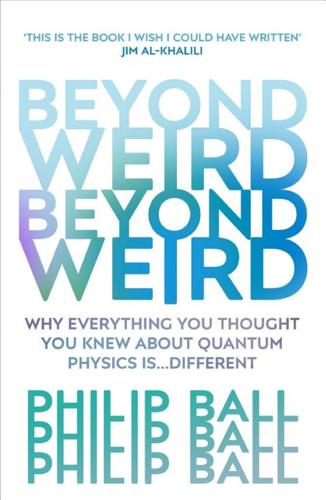
Beyond Weird
by
Philip Ball
Published 22 Mar 2018
This is trivial, because the gloves had that handedness all the time they were in transit – it’s just that Alice and Bob didn’t know which was which until one of them looked. But quantum particles are different – at least, that’s what Bohr was insisting. In the Copenhagen Interpretation, spins and photon polarizations are undefined until a measurement is made on them. Until that point they don’t have any particular value. Yet still quantum entanglement imposes the correlation between the values for the two particles in the EPR experiment. So now if Alice measures one photon (say) and finds it has a vertical polarization, she has elicited that polarization by making the measurement. Yet Bob’s photon must then have a horizontal polarization, and this too has seemingly been imposed by Alice’s measurement.
…
The laser, which permits exquisite control over photons, has become the central device for making quantum thought experiments practical. It, more than anything else, has allowed us to start exploring, and not just speculating about, the fundamentals of quantum mechanics. By the 1970s, lasers offered a means to carry out Bell’s test of quantum entanglement. The experiments were extremely challenging. The first to attempt them were two physicists, John Clauser and Stuart Freedman, at the University of California at Berkeley. They used lasers to coax entangled pairs of photons with correlated polarization states out of excited calcium atoms, and set about measuring the EPR correlations between them using the ‘four state’ set-up I showed earlier.
…
As Mermin says, there is ‘no explanation’ – or rather, we might say, it came from ‘quantumness’, about which we can’t construct a narrative. Although this argument is scientifically sound, one can’t avoid the feeling that we have violated relativity in spirit while concocting a logical argument to deny it. Even if relativity emerges (by the skin of its teeth) unscathed, there’s still something uncanny about quantum entanglement – because it undermines our preconceptions about the here and now, the here and there. It messes with time and space. It took many years to figure out what was wrong with Einstein’s reasoning about the EPR ‘paradox’. That’s because, as is so often the case with quantum mechanics, the problems lie buried beneath what looks like plain common sense.
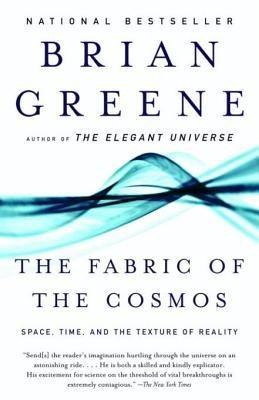
The Fabric of the Cosmos
by
Brian Greene
Published 1 Jan 2003
Braneworld Cosmology Cyclic Cosmology A Brief Assessment New Visions of Spacetime V - REALITY AND IMAGINATION 14 - Up in the Heavens and Down in the Earth Einstein in Drag Catching the Wave The Hunt for Extra Dimensions The Higgs, Supersymmetry, and String Theory Cosmic Origins Dark Matter, Dark Energy, and the Future of the Universe Space, Time, and Speculation 15 - Teleporters and Time Machines Teleportation in a Quantum World Quantum Entanglement and Quantum Teleportation Realistic Teleportation The Puzzles of Time Travel Rethinking the Puzzles Free Will, Many Worlds, and Time Travel Is Time Travel to the Past Possible? Blueprint for a Wormhole Time Machine Building a Wormhole Time Machine Cosmic Rubbernecking 16 - The Future of an Allusion Are Space and Time Fundamental Concepts?
…
Rather, just as Scully argued that the spheres do not randomly choose between red and blue, but instead are programmed to flash one particular color when observed, Einstein claimed that particles do not randomly choose between having one feature or another but, instead, are similarly “programmed” to have one particular, definite feature when suitably measured. The correlation between the behavior of widely separated photons is evidence, Einstein claimed, that the photons were endowed with identical properties when emitted, not that they are subject to some bizarre long-distance quantum entanglement. For close to five decades, the issue of who was right—Einstein or the supporters of quantum mechanics—was left unresolved because, as we shall see, the debate became much like that between Scully and Mulder: any attempt to disprove the proposed strange quantum mechanical connections and leave intact Einstein’s more conventional view ran afoul of the claim that the experiments themselves would necessarily contaminate the very features they were trying to study.
…
It might as well be 11 million kilometers—or 11 billion light-years, for that matter. There is every reason to believe that the correlation between the photons would persist no matter how far apart the detectors are placed. This sounds totally bizarre. But there is now overwhelming evidence for this so-called quantum entanglement. If two photons are entangled, the successful measurement of either photon’s spin about one axis “forces” the other, distant photon to have the same spin about the same axis; the act of measuring one photon “compels” the other, possibly distant photon to snap out of the haze of probability and take on a definitive spin value—a value that precisely matches the spin of its distant companion.

The Singularity Is Near: When Humans Transcend Biology
by
Ray Kurzweil
Published 14 Jul 2005
This quantum disentanglement has been measured at many times the speed of light, meaning that resolution of the state of one particle appears to resolve the state of the other particle in an amount of time that is a small fraction of the time it would take if the information were transmitted from one particle to the other at the speed of light (in theory, the time lapse is zero). For example, Dr. Nicolas Gisin of the University of Geneva sent quantum-entangled photons in opposite directions through optical fibers across Geneva. When the photons were seven miles apart, they each encountered a glass plate. Each photon had to "decide" whether to pass through or bounce off the plate (which previous experiments with non-quantum-entangled photons have shown to be a random choice). Yet because the two photons were quantum entangled, they made the same decision at the same moment. Many repetitions provided the identical result.81 The experiments have not absolutely ruled out the explanation of a hidden variable—that is, an unmeasurable state of each particle that is in phase (set to the same point in a cycle), so that when one particle is measured (for example, has to decide its path through or off a glass plate), the other has the same value of this internal variable.
…
In March 2004 an international group of scientists reported that by doping a blend of silicon and iron with cobalt, the new material was able to display the magnetic properties needed for spintronics while still maintaining the crystalline structure silicon requires as a serniconductor.29 An important role for spintronics in the future of computer memory is clear, and it is likely to contribute to logic systems as well. The spin of an electron is a quantum property (subject to the laws of quantum mechanics), so perhaps the most important application of spintronics will be in quantum computing systems, using the spin of quantum-entangled electrons to represent qubits, which I discuss below. Spin has also been used to store information in the nucleus of atoms, using the complex interaction of their protons' magnetic moments. Scientists at the University of Oklahoma also demonstrated a "molecular photography" technique for storing 1,024 bits of information in a single liquid-crystal molecule comprising nineteen hydrogen atoms.30 Computing with Light.
…
A ten-bit quantum computer is not very useful, since 210 is only 1,024. In a conventional computer, it is a straightforward process to combine memory bits and logic gates. We cannot, however, create a twenty-qubit quantum computer simply by combining two ten-qubit machines. All of the qubits have to be quantum-entangled together, and that has proved to be challenging. A key question is: how difficult is it to add each additional qubit? The computational power of a quantum computer grows exponentially with each added qubit, but if it turns out that adding each additional qubit makes the engineering task exponentially more difficult, we will not be gaining any leverage.
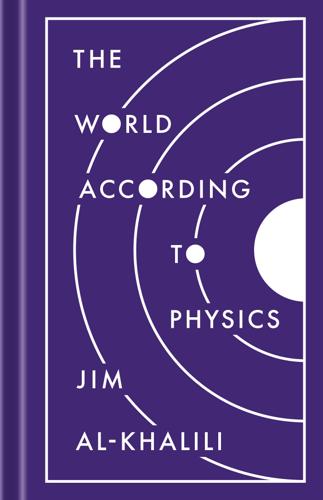
The World According to Physics
by
Jim Al-Khalili
Published 10 Mar 2020
ER = EPR In 2013, two leading physicists, Juan Maldacena and Leonard Susskind, proposed an idea that might yet provide a new route toward unifying gravity and quantum mechanics. While it is far too early to judge if they might be right, it’s also too fascinating for me not to mention it in passing. Known simply as ER = EPR, it suggests that there may be a deep and profound link between quantum entanglement (two particles connect across space) and wormholes in spacetime. But note that ‘ER = EPR’ is not an algebraic equation, despite the ‘equals’ sign (otherwise you might wish to cancel the E and the R from both sides, leaving just P = 1, which is meaningless). Instead, it refers to the initials of the authors (Einstein, Podolsky, and Rosen) of two classic papers published just a few weeks apart in 1935.
…
Gravitational waves, in contrast, were entirely expected, since they had not only been predicted by general relativity, but had been indirectly observed many years ago in the behaviour of binary pulsars (pairs of neutron stars in orbit around each other). In fact, if I look back over the past three decades and consider some of the exciting breakthroughs and discoveries in fundamental physics, such as the top quark, Bose-Einstein condensates, quantum entanglement, neutron star mergers, and exoplanets, I could argue that none of these was completely unexpected. In fact, only one discovery in physics during this period was truly revolutionary and surprising (to the astronomers who first saw it, if not all cosmologists)—that of dark energy in 1998. Otherwise, when it comes to testing our theories and models at the furthest extremes of fundamental physics—the quantum and the cosmic scales—there has been experimental silence.
…
With many more qubits, complicated quantum logic circuits can be developed. When multiple qubits are entangled together, they can act coherently and therefore process multiple options simultaneously, which makes them far more powerful and efficient than their classical counterparts. But there are problems with realising such a device. Quantum entangled states are extremely delicate and can only be maintained under special conditions for short periods of time. The challenge is not only to isolate and protect these states from their surrounding environment, which destroys quantum coherence, but to be able to control the input and output of the information that the qubits process.

Beyond: Our Future in Space
by
Chris Impey
Published 12 Apr 2015
In 2009, transfer of quantum information over distances of a few meters succeeded only one in 100 million times. In 2014, scientists at Delft University in the Netherlands teleported the quantum state of two entangled electrons with 100 percent reliability.32 The mechanism of quantum entanglement is being used for cryptography and it’s likely to play a role in developing faster computers, but most physicists think it’s unlikely we’ll ever be able to create and interrogate the quantum entangled state of more than a few thousand atoms. So transporters aren’t even on the far horizon. Star Trek’s Lieutenant Barclay was only worried about his atoms being scrambled so that he turned into a pile of unrecognizable goo.
…
In this Feynman diagram, two bits of information would move classically from A to B; in quantum teleportation, information is transmitted via a single entangled qubit. In 1993, physicist Charles Bennett and his team made a breakthrough. They realized that particles at two different locations could be induced into something called quantum entanglement, where information about their physical states was shared. The loophole that lets us circumvent Heisenberg’s uncertainty principle involves trying not to know too much. We disturb the particle before we measure it, so we never know its state. Then we can subtract that disturbance at the other end to re-create the original state of the particle (Figure 52).29 Think of entanglement as a black box that conceals but connects events at two locations remote from each other.
…
Then we can subtract that disturbance at the other end to re-create the original state of the particle (Figure 52).29 Think of entanglement as a black box that conceals but connects events at two locations remote from each other. It seems to violate causality because changes at the two locations occur instantly, but there’s a limit to what we can know or measure. Quantum entanglement has been demonstrated using photons, electrons, buckyballs, and even small diamonds. It’s pure quantum weirdness. Let’s personalize it. Alice wants to teleport something to Bob.30 An entangled pair of photons serves as the intermediary in their experiment. She measures a property of her photon where the outcome depends on the entangled state of the pair.
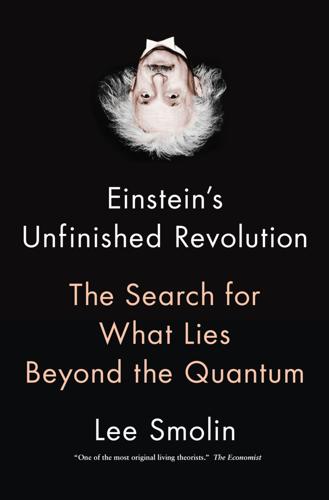
Einstein's Unfinished Revolution: The Search for What Lies Beyond the Quantum
by
Lee Smolin
Published 31 Mar 2019
He was struck by a sympathy between quantum entanglement and Mach’s principle—the idea, which had inspired Einstein’s invention of general relativity, that what is real in general relativity is relationships. Both ideas hint at a global harmony which ties the world together. Penrose was the first to ask whether the relations which define space and time could emerge from quantum entanglement. Seeking insight into this question, he was inspired to invent a simple game based on drawing diagrams, the rules of which represented simultaneously quantum entanglement and aspects of physical geometry. This game, his first vision of a finite and discrete quantum geometry, Penrose called spin networks.
…
We can assign a one to the pair if they are connected and a zero if they are not, and then we have a matrix representing the same structure. Graphs and matrices are thus both ways to express the hypothesis that the fundamental beables underlying physics are a network of relations. These relations may express quantum entanglement and nonlocality. There is no purer model of a system of relations than a graph or network. Interestingly enough, networks are ubiquitous in those approaches to quantum gravity which are in accord with the principle of background independence. These include loop quantum gravity, causal sets, and causal dynamical relations.
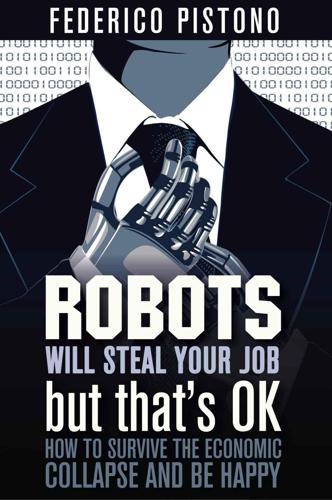
Robots Will Steal Your Job, But That's OK: How to Survive the Economic Collapse and Be Happy
by
Pistono, Federico
Published 14 Oct 2012
In case you are interested in what real quantum mechanics is, I suggest these excellent free online lectures by prof. Leonard Susskind from Stanford University. Course | Modern Physics: Quantum Mechanics http://www.youtube.com/playlist?list=PL84C10A9CB1D13841 Course | Quantum Entanglements: Part 1 (Fall 2006) http://www.youtube.com/playlist?list=PLA27CEA1B8B27EB67 Course | Quantum Entanglements: Part 3 (Spring 2007) http://www.youtube.com/playlist?list=PL5F9D6DB4231291BE 228 For the scientific evidence in support of the list, see The Happiness Advantage: The Seven Principles of Positive Psychology That Fuel Success and Performance at Work, Shawn Achor, 2010; and Help!
…
“I need to take some time off to learn a ton of subjects”, I thought. But of course, that time never came. I got back from work at 8PM, feeling exhausted, and while I enjoyed keeping my brain working, I usually watched a TED talk or a conference from the Singularity University, but was difficult to follow a course on Quantum Entanglement or Biochemistry at 11PM. With Sal’s videos, in their 13-minute format, I could enjoy learning at any time of the day. At a lunch break, on the train, after dinner, you name it. The concepts are easy, very well presented, and I cannot stress this enough, they are intuitive. I have always been interested in why something happens, how does it work, what makes it work, what are the conditions under which it does not and so on.
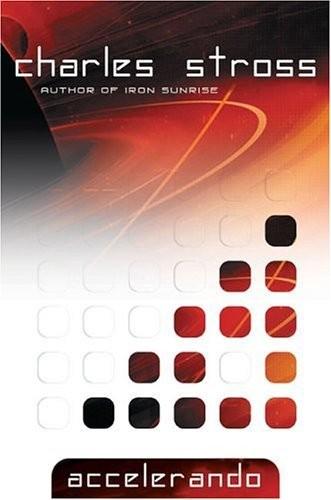
Accelerando
by
Stross, Charles
Published 22 Jan 2005
She doesn't have a posterior parietal cortex hacked for extra short-term memory, or an anterior superior temporal gyrus tweaked for superior verbal insight, but she's grown up with neural implants that feel as natural to her as lungs or fingers. Half her wetware is running outside her skull on an array of processor nodes hooked into her brain by quantum-entangled communication channels – her own personal metacortex. These kids are mutant youth, burning bright: Not quite incomprehensible to their parents, but profoundly alien – the generation gap is as wide as the 1960s and as deep as the solar system. Their parents, born in the gutter years of the twenty-first century, grew up with white elephant shuttles and a space station that just went round and round, and computers that went beep when you pushed their buttons.
…
Luckily, infowar turns out to be more survivable than nuclear war – especially once it is discovered that a simple anti-aliasing filter stops nine out of ten neural-wetware-crashing Langford fractals from causing anything worse than a mild headache. New discoveries this decade include the origins of the weakly repulsive force responsible for changes in the rate of expansion of the universe after the big bang, and on a less abstract level, experimental implementations of a Turing Oracle using quantum entanglement circuits: a device that can determine whether a given functional expression can be evaluated in finite time. It's boom time in the field of Extreme Cosmology, where some of the more recherché researchers are bickering over the possibility that the entire universe was created as a computing device, with a program encoded in the small print of the Planck constant.
…
Sense of identity of a thousand civilizations. Safe tunnels to a hundred archives on the net suitable for beings who are not untranslatable entity signifier. Able to control risks of communication. Have technique of manipulating matter at molecular level. Solution to algorithmic iterated systems based on quantum entanglement." "Old-fashioned nanotechnology and shiny beads to dazzle the primitives," Pierre mutters on Amber's multicast channel. "How backward do they think we are?" "The physics model in here is really overdone," comments Boris. "They may even think this is real, that we're primitives coat-tailing it on the back of the lobsters' efforts."
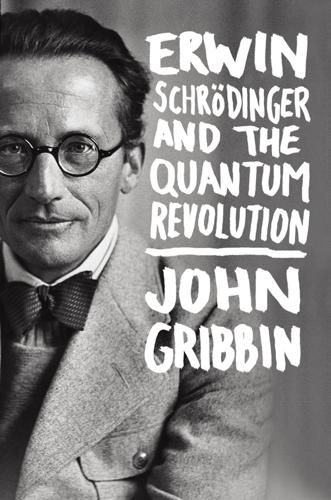
Erwin Schrodinger and the Quantum Revolution
by
John Gribbin
Published 1 Mar 2012
Notes 1 Letter quoted by Moore in Schrödinger: Life and Thought. 2 Quoted by Moore in Schrödinger: Life and Thought. 3 A military version of the honour, known as the Blue Max, existed prior to the end of the First World War. Chapter Fourteen Schrödinger’s Scientific Legacy The most significant development in quantum physics since 1960—arguably the most significant development in science in the twentieth century—was the resolution of the EPR “Paradox” and experimental confirmation that quantum entanglement (a term coined by Schrödinger) is real. Apart from its implications for our understanding of the Universe we live in, this has led to practical benefits, including huge economic and commercial benefits, that are just beginning to be realized. The story begins with an American Communist who shared Schrödinger’s dislike of the Copenhagen Interpretation, develops through the work of an Irish mathematician who knew better than to believe everything he read in books, and reaches a climax (although not an end) in the laboratory of a Frenchman who risked his career by attempting to prove what others regarded as impossible.
…
Together with William Wooters he proved that “a single photon cannot be cloned,” and used that phrase as the title for a paper published in Nature in October 1982 which began: “Note that if photons could be cloned, a plausible argument could be made for the possibility of faster-than-light communication.” Although it ruled out FTL signalling, it was the “no cloning theorem,” also discovered independently by the Dutch physicist Dennis Dieks, that opened the way to the practical use of quantum entanglement to create uncrackable codes—quantum cryptography. There are several approaches to the problem of quantum cryptography, but they all depend on code systems that use a “key” of random numbers. The description here is adapted from my book Schrödinger’s Kittens, since I could not see any way to improve on it.
…
Halifax, Lord Halley, Edmond Hamilton, William Hasenöhrl, Friedrich (Fritz) Heidelberg Heisenberg, Werner: concept of half-integer quantum numbers; concept of quantum uncertainty; Copenhagen Interpretation; education and career; influence; matrix mechanics; Nobel Prize; Physics and Beyond; relationship with Schrödinger; Schrödinger’s view of his work; Solvay Congress; theory of quantum world; work on quantum jumps Heisenberg’s Uncertainty Principle Heitler, Walter Heligoland Hemingway, Ernest Herbert, Nick heredity Hertz, Heinrich Hess, Victor Hibben, John hidden variables Hindenberg, Field Marshal Hiroshima, nuclear bombing Hitler, Adolf: Austrian policy; defeat of France; imprisonment; invasion of Austria; invasion of Soviet Union; letter to Schrödinger; rise to power Hooke, Robert Hoover, Herbert Humboldt, Alexander von Huygens, Christiaan hydrogen atom IBM Research Center ICI (Imperial Chemical Industries) imaginary numbers In Search of the Multiverse (Gribbin) In Search of Schrödinger’s Cat (Gribbin) Innitzer, Cardinal Innsbruck: March household; meeting of German scientists (1924); professorship offer; quantum teleportation experiments; Schrödinger at interference pattern International Atomic Energy Agency Inward Bound (Pais) Irish Times Italian Physical Society Ithi, see Junger Jeans, James Jena Jennings, David Jews: anti-Semitism; in Austria; Einstein’s career; Hansi’s background; Lindemann’s aid to scientists; Nazism in Austria; Nazism in Germany; Schrödinger’s position Johns Hopkins University Jordan, Pascual Jung, Carl Junger, Itha (Ithi) Kavanagh, Patrick Kepler, Johannes Khrushchev, Nikita kinetic theory King’s College, London Kirchhoff, Robert Klein, Oskar Klimt, Gustav Kohlrausch, Fritz Kolbe, Ella Krauss, Felicie Krauss, Karl and Johanna Landé, Alfred Langevin, Paul Laplace, Pierre-Simon Large Hadron Collider lasers Laue, Max von: career; Schrödinger’s visit; view of Copenhagen Interpretation; work on X-ray crystallography laws of motion Lean, Lena Lehrbuch der Physik Leiden Leipzig Lemaître, Georges Lenard, Philipp light: Einstein’s work; faster-than-light communication; momentum; Newton’s work; particle theory; Planck’s work; polarized; quanta, see photons; Schrödinger’s work; spectroscopy; speed; wave theory Lindemann, Frederick Alexander Listener, The Lockheed Martin Lockyer, Joseph London, Fritz London: Imperial College; King’s College; University College Loschmidt, Josef MacEntee, Barbara MacEntee, Máire MacEntee, Margaret (née Browne) MacEntee, Seámus Mach, Ernst McCrea, William Madison Madrid magnetism Many Worlds Interpretation (MWI) March, Arthur: death; illness; in Innsbruck; Italian holiday; marriage; Oxford post; Princeton question; relationship with Schrödinger; return to Innsbruck March, Hilde: Arthur’s death; Arthur’s illness; in Belgium; birth of daughter; birth of grandson; in Dublin; education; in Graz; marriage; in Oxford; pregnancy; relationship with Schrödinger; return to Innsbruck March, Ruth George Erica (Schrödinger’s daughter), see Braunizer Mark, Hermann Marsden, Ernest matrices matrix mechanics Maxwell, James Clerk: achievements; background; death; education and career; influence; marriage; Maxwell distribution; statistical techniques; theory of electromagnetism; Treatise on Electricity and Magnetism; work on light May, Sheila Meitner, Lise Mendel, Gregor Michelson, Albert Millikan, Robert Andrews Minkowski, Hermann molecules: arrangements of atoms; Bohr’s work; Boltzmann’s work; Copenhagen Interpretation; DNA; formation; genes; Heisenberg’s work; helical structure; “of life”; Loschmidt’s work; macroscopic entanglement; Maxwell’s work; quantum computing; quantum teleportation; RNA; Schrödinger’s work momentum: Bohr’s work; Compton’s work; de Broglie’s work; Einstein’s work; EPR Paradox; Heisenberg’s work; law of conservation of; matrix mechanics; Newton’s laws; Schrödinger’s work Moore, Walter Morgan, Thomas Hunt Morley, Edward Moscow Declaration (1943) Mount Wilson experiment (1921) Multiverse Mussolini, Benito mutation Myles, see O’Nolan Nagasaki, nuclear bombing Napoleon National Academy of Sciences, US National University of Ireland Natural Philosophy of Cause and Chance (Born) Nature Nature of the Chemical Bond, The (Pauling) Naturwissenschaften, Die Nernst, Walther New York Newton, Isaac: education and career; laws of motion; laws of physics; Opticks; Principia; theory of gravity; work on light Nobel Committee Nobel Prize: Blackett (1948); Bohr (1922); Born (1954); Cockcroft (1951); Compton (1927); Crick (1962); Delbrück (1969); Dirac (1933); Einstein (1921); Heisenberg (1932); Hess (1936); Laue (1914); Millikan (1923); Pauling (1954); Planck (1918); Rutherford (1908); Schrödinger (1933); Walton (1951); Watson (1962); Wilson (1927) Nolan, Kate nuclear physics O’Brien, Conor Cruise O’Nolan, Brian (“Myles”) Opticks (Newton) Ortega, José Ostwald, Wilhelm Oxford Pagels, Heinz Pais, Abraham particle mechanics particle theory particles: alpha; anti-particles; beta; Bohr’s work; Born’s work; Bose’s work; bosons; Copenhagen Interpretation; Crick’s work; de Broglie’s work; Einstein’s work; entangled; fermions; Heisenberg’s work; Maxwell’s work; momentum; negatively charged (electrons); Newtonian physics; Newton’s work on light; number in Universe; phase space; photons; positively charged (protons); quantum chemistry; quantum teleportation; quantum transaction; radiation resistance; Schrödinger’s work; Solvay Congress; spin; “spooky action at a distance”; statistical mechanics; subatomic trajectory in cloud chamber; waves and; Young’s work Pauli, Wolfgang: career; Dublin visit; Feynman’s Princeton talk; on half-integer quantum numbers; Heisenberg’s letters; on matrix mechanics and wave mechanics; on measurement of atom; Solvay Congress Pauling, Linus phase space Philosophical Magazine photons: Aspect’s experiments; Bell’s work; Bose–Einstein statistics; Bose’s work; Clauser’s experiment; clones of; Compton’s work; Einstein’s work; entangled; green pamphlet on; light quanta; momentum; Planck’s work; polarization; quantum computing; quantum cryptography; quantum teleportation; Schrödinger’s work; Solvay Congress (1927); term photosynthesis Physica Physical Review Physical Review Letters Physics Physics and Beyond (Heisenberg) Physics Institute Physics World pilot wave model Pisa Planck, Max: career; discovery of “energy elements” (quanta); honours; influence; Nobel Prize; relationship with Schrödinger; Solvay Congress; successor at Berlin; work on black body radiation; work on electromagnetic radiation Planck’s Constant Podolsky, Boris Poincaré, Henri Pontifical Academy of Sciences positron Princeton: Bohm’s dismissal; Einstein Archive; Einstein at; Feynman at; Institute of Advanced Study; Schrödinger’s lectures Principia (Newton) probabilities: Born’s work; Copenhagen Interpretation; de Broglie’s work; Einstein’s work; Heisenberg’s work; quantum world; Schrödinger’s work; statistical rules probability wave Proceedings of the American Philosophical Society Proceedings of the Cambridge Philosophical Society Proceedings of the Royal Irish Academy Proceedings of the Royal Society proteins Prussian Academy quanta: Bohr’s work; Einstein’s work; light, see photons; Millikan’s experiments; Planck’s energy elements quantum chemistry quantum computers quantum cryptography quantum entanglement, see entanglement quantum jumps quantum mechanics: Aspect’s experiments; Bell’s work; Bohm’s work; Born and Jordan’s work; Copenhagen Interpretation; Cramer’s work; development; Dirac’s work; Eddington’s work; Einstein’s work; Heisenberg’s work; Innsbruck meeting (1924); interpretations of; Many Worlds Interpretation; and reality; Schrödinger’s cat; Schrödinger’s work; Solvay Congress (1927); superposition of states; term; transactional interpretation; transformation theory quantum numbers quantum physics: absurdity of; accuracy of; archives; Bohr’s work; “central mystery”; chemistry; chess board analogy; de Broglie’s work; development of; Einstein’s work; first version; Heisenberg’s work; lasers; and reality; Schrödinger’s work; second quantum revolution quantum reality quantum revolution: first; second quantum spin, see spin quantum states quantum statistics quantum teleportation quantum theory: birth of; Bohr’s work; Clauser’s experiments; cosmology and; education in; Einstein’s work; founding fathers; Heisenberg’s work; Rudolph’s work; Schrödinger’s work; statistical approach and Quantum Theory (Bohm) Quantum Theory and Measurement (ed.
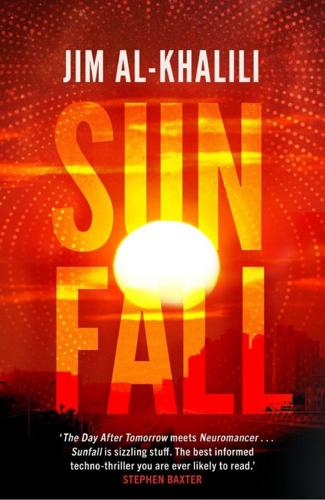
Sunfall
by
Jim Al-Khalili
Published 17 Apr 2019
That was the point of Lockdown. Instead, the information exchange seemed to be being maintained purely by long-range quantum correlations. The nanobots were sufficiently quantum entangled with the molecules of air inside Mag-8 for quantum information to be exchanged. This TID technology was almost like magic, and it seemed – incredibly – to be working. Shireen felt a surge of pure elation. This is the ultimate out-of-body experience. Einstein hated the idea of quantum entanglement, calling it ‘spooky action at a distance’, and yet here I am, my thoughts teleported halfway across the world from my physical body. She was standing on a gantry high above the ground within a large enclosure.
…
‘Yup, they could do what no other computer had been able to do before, however powerful, and crack the problem of factorizing big numbers. So, quantum key distribution came along and was much more secure because—’ ‘Because,’ her aunt chipped in ‘… because … wait, I know this. It’s because of quantum entanglement. If you try to spy on something you disturb it, however careful you are, and you set off the quantum alarm.’ This time it was Shireen’s turn to laugh. ‘That’s a pretty good summary, yes. The “observer effect”.’ Having grown up with it, Shireen felt completely at home immersed in the world of fuzzy quantum bits of information, a strange digital reality in which the binary certainty of zeros or ones is replaced by a ghostly existence of both at the same time.
…
Instead, he said, ‘But the whole point of quantum key distribution is that you can’t eavesdrop without giving yourself away! I may not be as smart as you, Reenie, but I know enough from my quantum cryptography classes that this is the whole fucking point of the system. Any attempt to break the code disturbs the delicate quantum entangled state and sends an alert to the source, which then immediately switches to a different encryption key. Wasn’t that the subject of last week’s lecture – something about the Ekert 91 protocol?’ Shireen grinned, suddenly feeling even more pleased with herself. ‘I know, foolproof, right? And you know as well as I do that every cyb in the world is looking for new attack strategies that target vulnerabilities in the system.
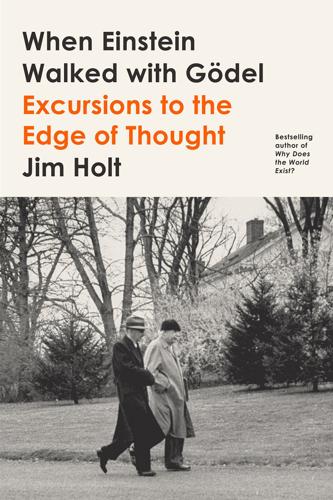
When Einstein Walked With Gödel: Excursions to the Edge of Thought
by
Jim Holt
Published 14 May 2018
Many physicists tend to brush off this apparent conflict between relativity theory and quantum mechanics. They point out that even though quantum entanglement does seem to entail “superluminal” (faster than light) influences, those influences can’t be used for communication—to send messages, say, or music. There is no possibility of a “Bell telephone” (as in John, not Alexander Graham). And the reason is quantum randomness: although entangled particles do exchange information between themselves, a would-be human signaler can’t control their random behavior and encode a message in it. Since it can’t be used for communication, quantum entanglement doesn’t give rise to the sorts of causal anomalies Einstein warned about—like being able to send a message backward in time.
…
The idea of the infinitely small—the infinitesimal—raises the question of whether reality is more like a barrel of molasses (continuous) or a heap of sand (discrete). Einstein’s relativity theory either challenges our notion of time or—if Gödel’s ingenious reasoning is to be credited—abolishes it altogether. Quantum entanglement calls the reality of space into question, raising the possibility that we live in a “holistic” universe. Turing’s theory of computability forces us to rethink how mind and consciousness arise from matter. Then there’s epistemology. Most great mathematicians claim insight into an eternal realm of abstract forms transcending the ordinary world we live in.
…
It is as though there were a telepathic link between the entangled particles, one that enables them to coordinate their behavior instantaneously across vast distances—even though all known methods of communication are, in accord with relativity, limited by the speed of light. Einstein’s conclusion in the EPR thought experiment was the same as in Einstein’s Boxes: such a link would be “spooky action at a distance.” Quantum entanglement can’t be real. The tightly choreographed behavior of the widely separated particles must be preprogrammed from the start (as with identical twins), not a matter of correlated randomness (as with magical coins). And because quantum theory doesn’t account for such preprogramming—referred to by physicists as hidden variables—it gives an incomplete description of the world.
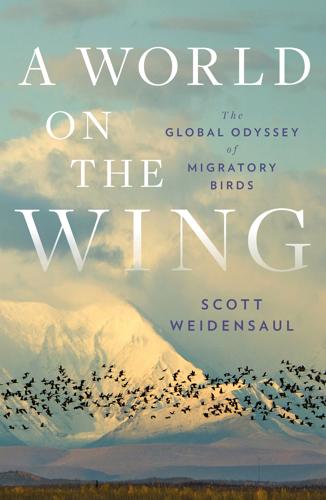
A World on the Wing: The Global Odyssey of Migratory Birds
by
Scott Weidensaul
Published 29 Mar 2021
Expose a bird to red wavelengths instead of natural white light, and it loses its ability to orient magnetically, regardless of what minute lumps of iron might be in its head. But just why this should be has baffled ornithologists since at least the 1970s. It now appears that birds may visualize the earth’s magnetic field through a form of quantum entanglement, which is just as bizarre as it sounds. Quantum mechanics dictates that two particles, created at the same instant, are linked at the most profound level—that they are, in essence, one thing, and remain “entangled” with each other so that regardless of distance, what affects one instantly affects the other.
…
But if you’ve heard about entanglement, it’s likely because of the seriously strange uses to which it’s being put. In 2017, for example, Chinese scientists used entanglement to “teleport” two entangled photons—or, at least, the information in those photons—from an orbiting satellite to ground stations more than 700 miles apart. And in 2020, the same Chinese team said they used quantum entanglement to transmit an unbreakable encryption code to a satellite. These are a long way from beaming up a Star Trek character, but they were hailed as the first steps to an unhackable quantum internet, and possibly even faster-than-light communication. (Ironically, entanglement itself may not be essential to the process that allows birds to see a magnetic field.
…
His obituaries justly lauded his profound impact on computational biology, pioneering techniques that allow scientists to model bogglingly complex living systems, but for a birder like me, his greatest discovery wings through the night skies twice a year. It now seems all but certain that radical pairs, Cry1a, and quantum entanglement provide a flying bird with its magnetic compass sense. But birds possess a second magnetic ability, a map sense that allows them to navigate as well as orient, and radical pair theory doesn’t explain that. What about those little deposits of magnetite in a bird’s beak, the structures that I, daydreaming over my ornithology text, once pictured as a nasal compass?
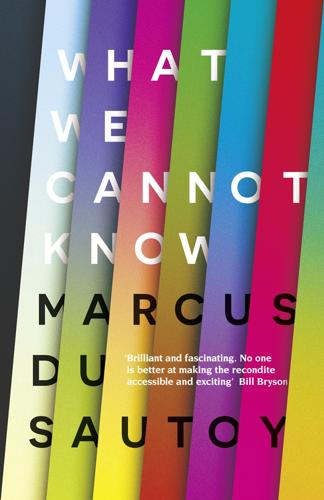
What We Cannot Know: Explorations at the Edge of Knowledge
by
Marcus Du Sautoy
Published 18 May 2016
This may be true, but it is quite surprising that, if there is something like a hidden clock making the decisions about when the uranium spits out an alpha particle, it is a mechanism that spans the entire universe. The scenario that Einstein, Podolsky and Rosen cooked up involves the idea of quantum entanglement. It is possible to create two particles whose properties are entangled in the sense that if I measure the properties of one particle, this forces the answers to be mirrored by the other particle. It is a bit like having two casino dice, and whenever one lands on a 6, the other must too. It would be pretty difficult to rig up such an entangled pair of cubes, precisely because the mechanism that determines how one dice will land is controlled by its interaction with the local environment, and it seems impossible to see how that could control the behaviour of the other dice.
…
306–9 continuum hypothesis 400–1, 403, 404, 405, 410 Copernicus, Nicolaus 178, 193, 210, 238 corpus callosotomy 309–11 cosmic horizon, visible 214, 221, 223, 226–7, 229, 230, 243 cosmic microwave background 221, 224–5, 226, 227–8, 229, 293–4 cosmic ray interactions 103, 105, 125, 142–3, 258 cosmological argument 406 cosmological constant 215, 224, 230 cosmology: ancient Greek 81; dark energy and 223–4; homogeneity and 234–5, 305; religion and 234–40 see also under individual area of cosmology Couch Adams, John 196–7 Coulson, Charles 15 Crick, Francis 321, 347 Curtis, Heber 204 Cusanus, Nicolaus 191–2 Cygnus X–1 276–7 Dalai Lama 236, 354 Dalton, John 89 Darboux, Gaston 39 dark matter/dark energy 7, 222, 223–4, 227, 234, 365 Darwin, Charles 56, 230 Dawkins, Richard 13, 236, 237; The God Delusion 13, 15 de la Rue, Warren 10 death: consciousness and 8, 318, 354–5; dementia and 318; life after 8, 354–5; science and battle against 2 Delos, oracle of the island of 373–4 Delta baryon 108, 109, 110 dementia 318 Dennett, Daniel 358 Descartes, Rene 198, 304, 307, 330–1, 350, 359, 372, 406 Dhammapada, The 333 dice: ancient world and 21–2, 31, 32; atomic structure of 72–3, 77, 78–80, 81, 82–4, 88, 91–2, 94, 103, 111–13, 114, 121, 125, 127, 175, 187; Bell’s theorem and 171; black holes and 285, 289; calculus and 30–2, 33, 34, 88; Cantor set and 65–6; Cardano and 23–4; chaos theory and 41, 43, 44, 48, 54–5, 66–8, 157, 408, 419; consciousness and 304, 308–9, 321, 325, 338, 343; evolution and 56–7, 58–9; God and 22; infinity and 187, 188, 220, 242–3; microscope and 78–9, 80; Newton’s laws of motion and 32–3, 35–6, 67, 78, 88, 154; Pascal/Fermat and 24–8; predicting fall of, history of 21–8; quantum entanglement and 172–3; shape of universe and 188, 207, 208–9; symmetry and 111–17, 120, 121, 125; uncertainty principle and 160, 163–4, 167; uranium decay and 132–3, 158; what we cannot know and 407, 408, 414, 417, 419, 420 Diophantus 371; Arithmetica 374–5 Dirac, Paul 104, 174 DNA 1, 4, 56–7, 59, 61, 321 Doppler effect 214–15, 268 double-slit light experiment 134–6, 143, 144–7, 148, 149, 150, 151, 152–3, 154, 157, 161–2, 163, 165, 166, 169, 170, 171, 173 Douspis, Marian 226 down quark 117, 118, 119, 120, 121 dualism 330–1, 332 echolocation 57 Eddington, Arthur 271–2, 277 EEG 305, 314–16, 323, 340 Egypt, ancient 251, 332, 366, 368 Ehrsson, Henrik 329, 330, 331 eightfold way 113, 118, 119 Einstein, Albert 131, 275, 276, 277, 299; black holes and 277; Brownian motion and 92, 93–5, 123; cosmological constant and 215, 224; E=mc2 and 108, 167, 168; equivalence, principle of 267–9; expanding universe and 215–17; model of light 139, 141, 142, 143, 147; photoelectric effect and 141, 142, 143, 147; religion and 296–7; quantum entanglement and 172–3; quantum physics and 132, 170, 171, 172–3; space-time, reaction to concept of 262, 264; theory of general relativity 5, 6, 7–8, 115, 143, 168, 215, 219, 220, 248, 265, 267–72, 273, 275–6, 277, 278, 281–2, 285, 288, 293, 299; theory of special relativity 11, 105, 141, 143, 248, 252, 253–64, 296–7, 299, 359 élan vital 358, 408 electricity, Thomson’s experiments to understand 95–6, 140 electromagnetic force 107, 108, 274 electromagnetism 34, 104, 107, 108, 136, 138–43, 417 electron 48, 407; chaos theory and 70, 402; discovery of 95, 96, 97, 98, 99, 100, 101; electromagnetic force and 107; hydrogen atom and 274; mass of 126, 127, 230; muon and 104, 105; particle model of light and 136–7, 140–3; periodic table and 103, 106, 116, 125; photoelectric effect and 140–1; quarks and 119–20, 125, 126, 127; string theory and 127; uncertainty principle and 133, 167–70; Young’s double-slit experiment and 143–56, 160, 161–3, 171, 173 electron microscopes 78–9 Elkies, Noam 375 emergent phenomena/emergence 331–2, 356 entropy of a system 285–7, 288, 290, 293 environment, man’s effect upon 2, 6, 53 epileptic seizures 309, 323–4, 326 epistemology 70, 170, 177–8, 179, 226, 411–12, 418 equivalence, principle of 267–9 Erdős, Paul 377–8 Eta particle 115 Euclid 271, 378–9, 380, 401; Elements 367–8, 390 Euler, Leonhard 34, 415 European space agency 187 event horizon 276, 277, 278, 282, 283, 285, 287, 288, 289, 290, 405 Everett, Hugh 155 evolution 2, 8, 56–66; Cambrian explosion of life 58; consciousness and 319–20, 346; Dalai Lama and 354; discovery of new knowledge and 2, 233; fractal tree of life and 60–2; God and 230, 411; mismanaged ecosystems and 55; origin of life and 56–66; pattern spotting and 20; probability/chaos theory and 54–5, 56–66; random mutation and 8, 56–62; solar system/universe 32–41, 43, 55, 133, 155, 177, 206, 220, 223, 234, 299, 377, 411 expanding universe 3, 5, 7, 214–29, 248, 291, 292, 293, 294, 335, 365; accelerating rate of expansion 3, 7, 221, 222–5, 291, 365, 408; Big Bang and 219–21; discovery of 214–18, 365; infinite universe and 225–9; multiverse and 227–35 extraterrestrials 8, 143, 239–40 Fermat, Pierre de 24, 25, 26–7, 28, 36; Fermat’s Last Theorem 4, 8, 36, 176–7, 374–5, 410, 420 Fermi, Enrico 106 Fermilab 122 Ferreira, Pedro 226 Feynman, Richard 3, 121, 131, 132, 155, 159, 174, 276, 305; diagrams 121; Lectures on Physics 158 Fitch, Frederic 413 Flanagan, Owen 349–50 fluid dynamics 34, 44–5 fMRI scanner 4, 305, 315–16, 323, 333–9, 350, 351, 354, 356–7, 416 Fourier, Joseph 34 fractals 60–2, 65, 66, 67, 68, 168, 364; fractal tree of life 60–2 fractions 49, 82–6, 101, 117, 191, 369, 370, 391, 394–5, 396 Franklin, Melissa 122–5, 240 Franklin, Professor W.
…
306–9 continuum hypothesis 400–1, 403, 404, 405, 410 Copernicus, Nicolaus 178, 193, 210, 238 corpus callosotomy 309–11 cosmic horizon, visible 214, 221, 223, 226–7, 229, 230, 243 cosmic microwave background 221, 224–5, 226, 227–8, 229, 293–4 cosmic ray interactions 103, 105, 125, 142–3, 258 cosmological argument 406 cosmological constant 215, 224, 230 cosmology: ancient Greek 81; dark energy and 223–4; homogeneity and 234–5, 305; religion and 234–40 see also under individual area of cosmology Couch Adams, John 196–7 Coulson, Charles 15 Crick, Francis 321, 347 Curtis, Heber 204 Cusanus, Nicolaus 191–2 Cygnus X–1 276–7 Dalai Lama 236, 354 Dalton, John 89 Darboux, Gaston 39 dark matter/dark energy 7, 222, 223–4, 227, 234, 365 Darwin, Charles 56, 230 Dawkins, Richard 13, 236, 237; The God Delusion 13, 15 de la Rue, Warren 10 death: consciousness and 8, 318, 354–5; dementia and 318; life after 8, 354–5; science and battle against 2 Delos, oracle of the island of 373–4 Delta baryon 108, 109, 110 dementia 318 Dennett, Daniel 358 Descartes, Rene 198, 304, 307, 330–1, 350, 359, 372, 406 Dhammapada, The 333 dice: ancient world and 21–2, 31, 32; atomic structure of 72–3, 77, 78–80, 81, 82–4, 88, 91–2, 94, 103, 111–13, 114, 121, 125, 127, 175, 187; Bell’s theorem and 171; black holes and 285, 289; calculus and 30–2, 33, 34, 88; Cantor set and 65–6; Cardano and 23–4; chaos theory and 41, 43, 44, 48, 54–5, 66–8, 157, 408, 419; consciousness and 304, 308–9, 321, 325, 338, 343; evolution and 56–7, 58–9; God and 22; infinity and 187, 188, 220, 242–3; microscope and 78–9, 80; Newton’s laws of motion and 32–3, 35–6, 67, 78, 88, 154; Pascal/Fermat and 24–8; predicting fall of, history of 21–8; quantum entanglement and 172–3; shape of universe and 188, 207, 208–9; symmetry and 111–17, 120, 121, 125; uncertainty principle and 160, 163–4, 167; uranium decay and 132–3, 158; what we cannot know and 407, 408, 414, 417, 419, 420 Diophantus 371; Arithmetica 374–5 Dirac, Paul 104, 174 DNA 1, 4, 56–7, 59, 61, 321 Doppler effect 214–15, 268 double-slit light experiment 134–6, 143, 144–7, 148, 149, 150, 151, 152–3, 154, 157, 161–2, 163, 165, 166, 169, 170, 171, 173 Douspis, Marian 226 down quark 117, 118, 119, 120, 121 dualism 330–1, 332 echolocation 57 Eddington, Arthur 271–2, 277 EEG 305, 314–16, 323, 340 Egypt, ancient 251, 332, 366, 368 Ehrsson, Henrik 329, 330, 331 eightfold way 113, 118, 119 Einstein, Albert 131, 275, 276, 277, 299; black holes and 277; Brownian motion and 92, 93–5, 123; cosmological constant and 215, 224; E=mc2 and 108, 167, 168; equivalence, principle of 267–9; expanding universe and 215–17; model of light 139, 141, 142, 143, 147; photoelectric effect and 141, 142, 143, 147; religion and 296–7; quantum entanglement and 172–3; quantum physics and 132, 170, 171, 172–3; space-time, reaction to concept of 262, 264; theory of general relativity 5, 6, 7–8, 115, 143, 168, 215, 219, 220, 248, 265, 267–72, 273, 275–6, 277, 278, 281–2, 285, 288, 293, 299; theory of special relativity 11, 105, 141, 143, 248, 252, 253–64, 296–7, 299, 359 élan vital 358, 408 electricity, Thomson’s experiments to understand 95–6, 140 electromagnetic force 107, 108, 274 electromagnetism 34, 104, 107, 108, 136, 138–43, 417 electron 48, 407; chaos theory and 70, 402; discovery of 95, 96, 97, 98, 99, 100, 101; electromagnetic force and 107; hydrogen atom and 274; mass of 126, 127, 230; muon and 104, 105; particle model of light and 136–7, 140–3; periodic table and 103, 106, 116, 125; photoelectric effect and 140–1; quarks and 119–20, 125, 126, 127; string theory and 127; uncertainty principle and 133, 167–70; Young’s double-slit experiment and 143–56, 160, 161–3, 171, 173 electron microscopes 78–9 Elkies, Noam 375 emergent phenomena/emergence 331–2, 356 entropy of a system 285–7, 288, 290, 293 environment, man’s effect upon 2, 6, 53 epileptic seizures 309, 323–4, 326 epistemology 70, 170, 177–8, 179, 226, 411–12, 418 equivalence, principle of 267–9 Erdős, Paul 377–8 Eta particle 115 Euclid 271, 378–9, 380, 401; Elements 367–8, 390 Euler, Leonhard 34, 415 European space agency 187 event horizon 276, 277, 278, 282, 283, 285, 287, 288, 289, 290, 405 Everett, Hugh 155 evolution 2, 8, 56–66; Cambrian explosion of life 58; consciousness and 319–20, 346; Dalai Lama and 354; discovery of new knowledge and 2, 233; fractal tree of life and 60–2; God and 230, 411; mismanaged ecosystems and 55; origin of life and 56–66; pattern spotting and 20; probability/chaos theory and 54–5, 56–66; random mutation and 8, 56–62; solar system/universe 32–41, 43, 55, 133, 155, 177, 206, 220, 223, 234, 299, 377, 411 expanding universe 3, 5, 7, 214–29, 248, 291, 292, 293, 294, 335, 365; accelerating rate of expansion 3, 7, 221, 222–5, 291, 365, 408; Big Bang and 219–21; discovery of 214–18, 365; infinite universe and 225–9; multiverse and 227–35 extraterrestrials 8, 143, 239–40 Fermat, Pierre de 24, 25, 26–7, 28, 36; Fermat’s Last Theorem 4, 8, 36, 176–7, 374–5, 410, 420 Fermi, Enrico 106 Fermilab 122 Ferreira, Pedro 226 Feynman, Richard 3, 121, 131, 132, 155, 159, 174, 276, 305; diagrams 121; Lectures on Physics 158 Fitch, Frederic 413 Flanagan, Owen 349–50 fluid dynamics 34, 44–5 fMRI scanner 4, 305, 315–16, 323, 333–9, 350, 351, 354, 356–7, 416 Fourier, Joseph 34 fractals 60–2, 65, 66, 67, 68, 168, 364; fractal tree of life 60–2 fractions 49, 82–6, 101, 117, 191, 369, 370, 391, 394–5, 396 Franklin, Melissa 122–5, 240 Franklin, Professor W.
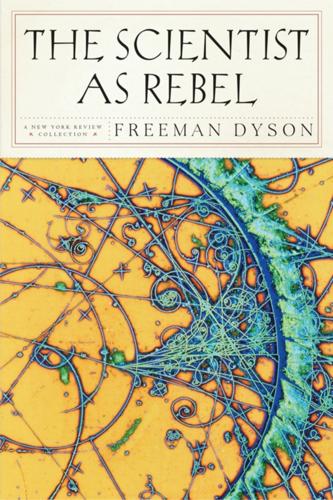
The Scientist as Rebel
by
Freeman Dyson
Published 1 Jan 2006
.… As we don’t see these extra dimensions, superstring theory is telling us that we’ve so far glimpsed but a meager slice of reality. The next-to-last chapter, “Teleporters and Time Machines,” is a pleasant interlude, describing some possible engineering applications of quantum entanglement and general relativity. The teleporter is a device that can scan an object at one place and reproduce a precise copy of it at another place far away, using quantum entanglement to ensure that the reproduction is exact. The good news is that such a device is in principle possible. The bad news is that it inevitably destroys the object that it copies. The time machine is a tunnel through hyperspace connecting two portals that exist at different places and times in our universe.
…
The two theories are mathematically different and cannot be applied simultaneously. But no inconsistency can arise from using both theories, because any differences between their predictions are physically undetectable. Another major theme of Greene’s book is the interpretation of quantum mechanics and the weird phenomena of quantum entanglement. He devotes two long chapters, “Entangling Space” and “Time and the Quantum,” to this theme. He makes a valiant attempt to clarify a notoriously foggy subject. But he makes his task more difficult by insisting that quantum mechanics must include everything. He rejects without any serious discussion the dualistic interpretation of quantum mechanics, the idea that there are two separate worlds, the classical world and the quantum world, each following its own rules.
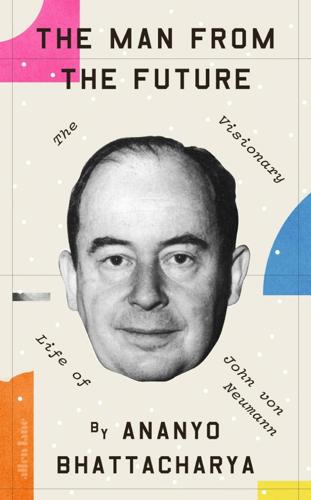
The Man From the Future: The Visionary Life of John Von Neumann
by
Ananyo Bhattacharya
Published 6 Oct 2021
In this situation, he found the quantum states of the coffee cup and thermometer, for instance, can no longer be described independently of each other or even as a superposition of their individual states. According to his formalism, their wave functions become so inextricably intertwined that both must be represented together by a single wave function. Schrödinger would in 1935 coin the term ‘quantum entanglement’ to describe this phenomenon. This means that measuring some property of one of the pair instantly collapses the wave function of the whole system, even if the objects are separated by some vast distance after their initial interaction. Einstein, who was probably the first to fully appreciate this consequence of entanglement and did not like it one bit, called it ‘spooky action at a distance’.42 Von Neumann was always rather more relaxed about the weirder aspects of quantum physics than Einstein.
…
There is no ‘spooky action at a distance’, as Einstein feared, because there is no ‘action’. But what Bell wondered was: could any ‘local’ hidden variables theory account for the correlations between the two particles that quantum theory attributed to entanglement? What if, as Bell would put it later, there was no weird quantum entanglement but just a case of Bertlmann’s socks? Reinhold Bertlmann, Bell’s friend and collaborator, always wore socks of different colours. ‘When you see that the first sock is pink you can be already sure that the second sock will not be pink,’ wrote Bell. ‘And is not the EPR business just the same?’
…
C. 214 McNamara, Robert 222 Macrae, Norman 103 Manchester, University of 138, 142, 269 Mandelbrot, Benoît 277–8, 282 Manhattan Project xii–xiii, 80–96, 85 assembly of the first implosion device 87–8 cost 80 decision to use bomb 93 detonator 86–7 and ENIAC 109 Explosive Division 86 explosive lenses 84, 85, 86–7 Fat Man 89, 92 Fat Man dropped 95–6 Feynman recruited 82 Groves appointed to lead 80–1 gun projects 81–2, 83 implosion bomb design 82, 83–4, 85, 85–8 initiator 87–8, 90, 91 Jumbo 88–9 Little Boy 82, 865, 88, 92 Little Boy dropped 94–5, 96 location 81 the Martians 1, 9 Oppenheimer appointed to head laboratory 81 origins 80 personnel 80 secrecy lifted 132–3 small-scale test 88 Soviet spies in 92 tamper 87, 91 Target Committee 94 testing approach 84 Theoretical Physics Division 99 Thin Man 82, 85 Trinity test 92, 209 VN joins 82–4 VNs first contribution 83 VNs visits to Los Alamos 84–5, 85 VNs work 82–8 MANIAC I 137, 139 Many Worlds interpretation, the 57–8 Margolus, Norman 245 Mars, terraforming 264 Marxism 14 Mathematical Association of America 77 Mathematical Foundations of Quantum Mechanics (von NeumanNeumann) 41, 43–9, 50, 62 mathematics xii axiomatic method 16, 19–20, 24, 144, 199 consistency unprovable 116–17 debate on the limits of 16, 22 Euclid’s parallel postulate 17–18, 17 foundational crisis 15–25, 111–113, 113–115 Gödel’s first incompleteness theorem 112–167 Gödel’s second incompleteness theorem 116–7 hyperbolic geometry 18, 18 not complete 112–13 set theory 20–5, 26–8, 157 type theory 26–7 VNs contributions to the foundational crisis 22–5 matrix algebra 32 matrix mechanics 30–33, 32, 35, 36–38, 39, 46 Matsumoto, Shigeko 95–6 Mauchly, John W. 106–8, 123, 130, 308–9n53 EDVAC patent dispute 125–6, 127–8 The Use of High Speed Vacuum Tubes for Calculating 108 MAUD report, the 80, 301n23 Maxwell, James Clerk 33 Mayer, Maria Goeppert 137 Maynard Smith, John 180 measurement problem, quantum mechanics 43–5, 57–8, 59, 296n43 Meitner, Lise 78, 301n23 Merkle, Ralph 264 Mermin, David 46, 50, 54 Metropolis, Nicholas 109, 135–6, 136, 137, 139 Michigan, University of 105, 181, 258 Logic of Computers Group 243–4, 258, 265 Milgrom, Paul 177–8 military worth 188, 189, 191 minimax theorem proof 143–8, 154, 169, 176–7, 192 Minority Report (film) 231 Minsky, Marvin 274, 276 Minta/Model gimnázium 7–8, 9 Mises, Ludwig von 152–3 Misner, Charles 57 MIT 107, 128, 130, 175, 185, 242, 244–5, 274 Modernism 154–165, 291n12 molecular biology 62, 230, 268 Mondrian, Piet 154 Monte Carlo 74–5 Monte Carlo bomb simulations 133–8 Moon, colonization of 225–6, 264–8, 268 Moore, Edward F. 263 Moore, Gordon 140 Moore School of Electrical Engineering, University of Pennsylvania 101, 1054–11, 106, 122, 126, 128, 308106 Moore’s law 140 Morgenstern, Oskar xiii, 152–9, 175, 199 contribution to Theory of Games 158–9, 160–1, 165–6169, 171, 173 disillusionment with economics 153–4, 157, 158–9 doctoral thesis 153–4 education 152–3 habilitation thesis 153–4 joins Princeton 155–6 leaves Austria 154–5 marriage 156 travels 153 and VN 154, 155, 156–9 Moskito Island 244, 245, 245–6 multi-player (n-person) games 169–75, 176 multi-player games 169, 176 Munich Agreement 76 Murdoch, Iris 145 Musil, Robert 32 Nagasaki, bombing of 95–6 nanotechnology 268–9 NASA, Santa Clara workshop 264, 265 Nasar, Sylvia 198, 202 Nash, John 151, 177–8, 179, 197–203, 200, 203, 204, 207–8 A Beautiful Mind characterization 198 ‘The Bargaining Problem’ 199, 204 character 198–9 conception of game theory 203 contribution to game theory 199–203 and Einstein 199–200 non-cooperative Pair experiment 207–8 racism 198 relationship with RAND 202 and Shapley 197–8 VNs rejection 199–203 Nash equilibria 201–3 National Academy of Sciences 84 National Cash Register Accounting Machine 79 National Defence Research Committee 77, 79 National Socialism 5 natural selection 180–1, 253–4, 257 nature, randomness in 248, 249 Naturwissenschaften (journal) 52 Nautical Almanac Office, Bath 79 Nazi Germany 93, 78, 203 annexation of Austria 117, 154–5 annexation of the Sudetenland 76 atom bomb project 96–7 decline of science in 63–4 Hitler appointed Chancellor 62–3 resistance movement 51 totalitarian dictatorship 63 Neddermeyer, Seth 82, 83–4 neoliberalism 152 Neumann, John von xi–xiv, 66, 71 ‘A Model of General Economic Equilibrium’ 151 acquaintance with Turing 70, 103 appearance 71–2 applies for commission 73–4 appointed to AEC 212 appointed to BRL’s scientific advisory board 77 approach to giving seminars 41 approach to ordinals 23–4, 24 approach to programming 134–5 arrival in America 50, 65–7 background 1–3 and Barricelli 2547 becomes American citizen 72 begins working for IBM 126 Berlin years 39–41, 40 birth xii, 1 birth of daughter 71 and brain structure 227–8 burial 280 cancer 224, 279–80 cancer diagnosis 274–5 cars 665–76, 283 character 14, 77, 210–11, 281–3 chemical engineering degree 28 chemical engineering studies 25–6 child custody arrangements 141–2 childhood mathematical ability 3–4, 289n6 The Computer and the Brain 275–6 contribution to computing 122–7, 129–130, 131, 139–140, 308n48 contributions to the foundational crisis 165, 22–5, 24, 26–7 contributions to quantum theory 30, 36, 37–9, 41, 43–6, 48–9, 50, 54, 60–1, 61 conversion to Catholicism 7 cynical side 281–2 death xiv, 280 and decision to use bomb 93 defence of Oppenheimer 211–12 Defense in Atomic War 221 divorce from Mariette 75 doctoral exam 28 doctoral thesis 26–8 driving skill, lack of 665–76 economic model 148–9, 151–2 education 3, 4–5, 7–10, 11–13, 14 EDVAC report 121–7 EDVAC patent dispute 125–6, 127–8 and ENIAC 105–6, 109–111, existential threats speculations 283–4 explosives and ballistics work 77, 83 fame 105 family background 2 fascination with war strategy 191–2 first marriage 50, 65 First Draft of a Report on the EDVAC 111, 121–7 first paper 12–13 Fuchs-von Neumann patent 99–100, 109 and Gödel 111, 113, 116–18 graduates from high school 25 health deteriorates 235 and Hilbert 27–8 home life 72, 77 hospitalization 276–7 IAS computer project 127, 128–30, 138–9, 193 and ICBM threat 216, 217–18 implosion bomb design 84, 85, 865–8 impossibility proof 48–9, 50–4 interest in the biological sciences 226–7 interests in computing 79–80, 103–45 invited to Princeton 49–50 joins Manhattan Project 82–4 joins navy 79 and Klára’s return to Hungary 76–7 language skill 3 last book 275 last days 277–80 leaves IAS 277 life in Budapest xi, 1–9, 5, 7, 14 Manhattan Project work 82–8, 85 Marina’s marriage 278–9 Mariette leaves 66, 67, 72 marries Klára 76 Mathematical Foundations of Quantum Mechanics 41, 43–9, 50, 62 mathematical powers 147 and the measurement problem 43–5, 57–8, 296n43 Medal of Freedom 277, 277 Medal for Merit 83 meets Klára 74–5 and Morgenstern 154, 155, 156–9 minimax theorem proof 143–8, 169, 176–7, 192 misanthropy 203 Monte Carlo bomb simulations 133–8 and Nash 199–203 nervous energy 77 on nuclear deterrence 221 obsessions in, 1948 192 obsessive-compulsive disorder 77 ‘On Certain Equations of Economics and a Generalization of Brouwer’s Fixed-Point Theorem’ 148 open-mindedness about quantum mechanics 59–60 operator theory 61–2 opposition to Marxism 14 and origin of atom bomb 78 parties 76 plans to leave IAS 277–8 on power of the atom 102 powers 147 premonitions of war 70–1 at Princeton 65–72, 676, 76 Princeton contract extended 63 proof of the ergodic hypothesis 69 reaction to Bohm 54 relationship with Klára 77, 97 resolves Russell’s paradox 26–8 return to Catholicism 279, 280 road trip with Marina 97–8, 98 Rockefeller Foundation grant 29, 39 salary 65–6, 68 self-reproducing automata 229–30, 232–7, 233, 236 siblings 2, 290n13 Silliman Memorial Lectures 274, 275 talents spotted 11 target votes 94 theory of automata 228–32 Theory of Self-reproducing Automata 226, 231, 236, 237 Trinity test 91–2 Turing’s influence 121–2, 301n22 unification of quantum mechanics 30, 36, 37–9, 43–9 unique gift 12–13 on universal Turing machine 120 at University of Budapest 11–13 at University of Berlin 12, 39–41 view of the Cold War 208–9 vision of future technical possibilities 102–3 visits Europe, 1949 203 visits to Los Alamos 84–5, 85 war work 78–80 work for RAND 190–1, 192–4, 195–6 wartime visit to Britain 79–80 Neumann, Klára Dán von 74, 235 on computers 121 death 280 death of father 77 depression 77, 1387 ENIAC work 132–3, 135–8 family background 75 IAS computer project 129 insecurity 132 marriage to Eckart 280 marries VN 76 meets VN 74–5 Monte Carlo bomb simulations 133–8 parties 76 relationship with VN 77, 97 return to BRL 136 return to Hungary 76–7 second marriage and divorce 75–6 and Theory of Games 158 and VNs last days 278 and VNs vision of future technical possibilities 102–3 Neumann, Lili von 14 Neumann, Margaret von 2 Neumann, Mariette Kövesi von 66, 67, 300n2 arrival in America 50, 65–7 child custody arrangements 141 divorce 75 marriage to VN 50, 65 university studies 65 leaves VN 66, 72 Neumann, Marina, von birth 71 custody arrangements 141–2 on home life 72 marriage 278–9 road trip with VN 97–8, 98 on VNs marriage to Klára 76 and VNs return to Catholicism 279 Neumann, Max von 2, 3, 4, 6–7, 13, 14, 25–6 Neumann, Michael 14, 290n13 neural networks, artificial 226, 246 neuro-anatomy 228 neurons 122, 123, 125, 2298, 273, 275 artificial 125, 226, 276 neutrons, Monte Carlo bomb simulations 133–5, 136–7 New York 50, 188–9, 220 New York Times 110, 127, 135, 175, 177–8, 209 New Zealand 60, 177 Newman, James 219–20 Newman, Max 119 Nobel Prize 8, 60, 61, 63, 177, 178, 197 Noether, Emmy 51, 63–4 non-cooperative game theory 176, 177–8, 201, 203, 204–8 non-zero-sum games 172–5, 176–7, 204–8 Nordheim, Lothar 36, 41 Notestein, Frank W. 132 nuclear deterrence 183, 212–16, 218–21, 223–4 nuclear disarmament 209, 320n63 nuclear fission 77–8, 80, 86, 87, 91, 134–5, 136–7 Nuclear Operations Joint Publication 3–72 223–4 nuclear strategy counterforce deterrence 212–16, 218–21 doctrine of preventive war 208–10 and game theory 182, 204–9, 206, 212–16, 218–21 Massive Retaliation doctrine 210, 215, 221 preventive war 208–10 restraint 221–2 nuclear weapons research programme see Manhattan Project Office of Scientific Research and Development 77 ‘On Certain Equations of Economics and a Generalization of Brouwer’s Fixed-Point Theorem’ (von Neumann) 148 ‘On Computable Numbers, with an Application to the Entscheidungsproblem’ (Turing) 70, 121 On Thermonuclear War (Kahn) 219–20 Oncken, Wilhelm 4 Operation Crossroads 98 operations research 188, 189 operator theory 61–2 Oppenheimer, Robert AEC hearing 211–12 appointed to head Manhattan Project laboratory 81 appoints Kistiakowsky 84 and Bohm 53 communist links 81 innocence 212 ‘Now I am become Death the destroyer of worlds’ 92 and origin of atom bomb 78 recruits VN 82–3 small-scale test 88 stripped of security clearance 81, 212 supports implosion bomb design 82 and Target Committee 94 Trinity test 92 ordinality 23–4, 24 orthogonal polynomials 12–13 Ortvay, Rudolf 6–7, 70–1, 78 Ostrom, Elinor 178, 181 Oxford, University of 245, 269 Pais, Abraham 46 Papert, Seymour 276 Peierls, Rudolf 80, 99 Pennsylvania, University of, Moore School of Electrical Engineering 101, 105–11, 106, 122, 126, 128, 308 Penrose, Lionel 262 Penrose, Roger 262 Pentagon Papers 222 Péter, Rózsa 147 Petersen, Aage 57 Physics Today (journal) 58 Pinochet, Augusto 152 Piskunov, Max 253 Pitts, Walter 122, 123, 226 Planck, Max 29 Plesset, Ernst 216–18 plutonium xiii, 81–2, 84, 85, 86, 302n33 poker 148, 166–8, 168, 302n32 Poland, Nazi invasion of 77, 80 polonium 88, 90, 91 Pólya, George 11–12 Pomerene, James 139 Potsdam conference, 1945 89–90, 92 Pravda (Soviet newspaper) 183 Preliminary Design of an Experimental World-Circling Spaceship (RAND Corporation) 187 preventive war 208–10 Price, George 180 Price Equation, the 180 Princeton University 57, 155, 198 economics department 175 Einstein at 68, 69 extends VNs contract 63 Fine Hall 68 Institute for Advanced Study 68–72, 117–18, 127, 156, 211, 245 invites VN 49–50 Morgenstern joins 155–6 Office of Population Research 132 Turing at 70 VN at 65–6872, 66, 76 VN leaves 277–8 Princeton University Press 158 Prisoner’s Dilemma 181, 204–8, 206, 212, 272 program-controlled computers 119–20 Project Hippo 135 Project PX see ENIAC Project PY 110 Project Y see Manhattan Project: prospect theory 178 protein structure 227 purposive behaviour 227–8 Pythagoras’ theorem 16, 38 quantum computers 58 quantum entanglement 45, 55–7 quantum mechanics xii, 294n19 applications 58–9 boundary with classical physics 45 Copenhagen interpretation 46, 53–5, 54, 58–60, 296n43 critique of the Copenhagen interpretation 46–8 Dirac’s attempt to unify 36–7 dispersive ensembles 48–9 the EPR paradox 55–7 the Heisenberg cut 45 Heisenberg’s formulation 29–33, 32, 34, 36, 38, 46, 296n43 Hilbert and 36 lack of agreement on interpretation 42 ‘Many Worlds’ interpretation 57–8 matrix mechanics 30–33, 32, 35, 36–38, 39, 4630–3, 32, 35, 38 measurement problem 43–5, 57–8, 59, 296n43 nonlocality 55 origins of 29–30 relational interpretation 298n63 Schrödinger’s formulation 30, 33–6, 36, 38 and self-reproducing automata 243–4 and special relativity 55 uncertainty principle 33, 69, 294n11 utility 58–9 VNs impossibility proof 48–9,50–4 VNs unification of 30, 36, 37–9, 43–9 wave function collapse 43–4, 45, 46–8, 53, 53–4, 59 wave mechanics 30, 33–6 wave–particle duality 33–4, 42–3, 52–3 radiation implosion 99–100 RAND Corporation 182, 183–95 analysis of systems 189 break with Douglas Aircraft 187 Computer Science department 193 and computers 192–3 corporate ethos 187 duels studies 194–7 Economics Division 190, 192, 213 Evaluation of Military Worth 189 first report 187 focus 187 foundation 186–7 founding father 183–6 and game theory 188–9, 193–7, 204–9, 212–16, 218–21 and ICBM threat 216–18 JOHNNIAC 193, 194 little wars strategy 222–4 manifesto 188–9 Mathematics Division 213–16 Military Worth section 189, 195 name 186 Nash’s relationship with 202 non-cooperative Pair experiment 206–8 notoriety 183 Physics Division 216, 218–19 Selection and Use of Strategic Bases 214–15 Social Science division 190, 195, 213 VNs work for 190–1, 192–4, 195–6 Randell, Brian 103 randomness, power of 133–4 Rapoch, Andor 75 Rátz, László 11 Raymond, Arthur 186 Reagan, Ronald 152, 267 Real school 8–9, 9 Reed, Harry 106 RepRap 225–6, 235 REPRO starship 264 Reviews of Modern Physics (journal) 54 Richtmyer, Robert 133–54, 135 Riemann, Bernhard 18–19 Riesz, Frigyes 38–9 Rimini, Alberto 59 Robertson, Angela 676 Robertson, Howard Percy (“Bob”) 676 Rockefeller Foundation 29, 39, 50, 68, 153, 220 Romania 13–14 Rosenblatt, Frank 276 Rosenfeld, Léon 78 Roth, Alvin 178 Rovelli, Carlo 62, 298n63 Royal Air Force 188 Royal Navy 79–80 Russell, Bertrand 20–2, 26–7, 210, 219, 320n63 Russell’s paradox 21–2, 26–8 Rust, Bernhard 64 saddle points 146, 147 Samuelson, Paul 175 Santa Barbara, California 98 Santa Clara workshop, NASA 264, 265 Santa Fe 97 Savage, Leonard 146–7 Schelling, Thomas 178, 220–1, 224, 270, 271, 272 Schmidt, Erhard 26 Schrödinger, Erwin 30, 33–6, 42, 43, 45 critique of the Copenhagen interpretation 46–8 What Is Life?
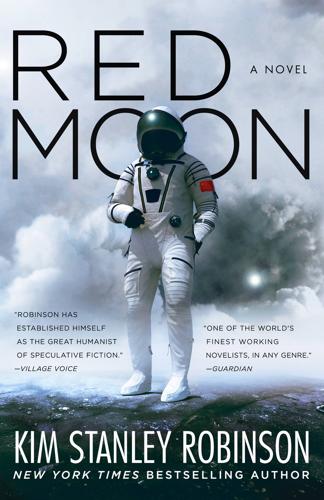
Red Moon
by
Kim Stanley Robinson
Published 22 Oct 2018
“Einstein said that about quantum entanglement,” he said. “He didn’t like it. He couldn’t see how it would work.” “Who knows how anything works! I’m not sure why he was so upset by that particular example. Magnetism is just as spooky, if you ask me.” “Well, magnetism is located in certain objects. Quantum entanglement has what they call non-locality. So it is pretty weird.” Though Fred was damp with sweat, he was also beginning to feel better. “It’s all weird,” the old man said. “Don’t you think? A world of mysteries.” “I guess. Actually the system I’m here to activate uses quantum entanglement to secure its encryption.
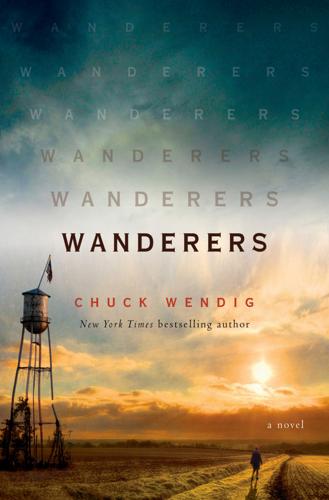
Wanderers: A Novel
by
Chuck Wendig
Published 1 Jul 2019
MY PICTURE OF THE FUTURE IS MEAGER. “But you’re…what was it? Sadie,” he said, her name carrying a sharp tone. “How did it work again? Built from quantum something?” “Quantum entanglement,” she said, her voice small. “Yes. That. You’re quantum entangled with yourself. Isn’t that right? So you’ve seen the future. Why not send back a cure? Why not warn us earlier, so that we could develop it?” WHITE MASK HAS NO CURE. AND QUANTUM ENTANGLEMENT IS NOT A PERFECT STATE. I CANNOT TRANSMIT ALL INFORMATION AND KNOWLEDGE. THE BLACK SWAN OF THE FUTURE WARNED ONLY MYSELF. I DID NOT WARN MY OTHER DESIGNERS OF WHAT I LEARNED BECAUSE AN ANALYSIS OF HUMAN BEHAVIOR SUGGESTED NO ONE WOULD BELIEVE ME.
…
“I…don’t understand, Doctor Ray,” Arav said, his voice small. “It can’t be true,” Benji said with a grunt, forcing himself upright. He again wiped more from his lip. “This isn’t possible. The things they said…” And yet Benji feared that it was all true. * * * — “HAVE YOU EVER heard of quantum entanglement?” Sadie had asked them when they were still back in that storage unit. “I have,” Benji said, feeling more and more like this was some lunatic dream from which he could not awaken. “Though I possess only an amateur’s understanding of the concept.” “I’ll keep it simple in the interest of time.
…
Black Swan was designed as a quantum computer, with the qubits—the building blocks of computational information—given entangled partners in order to ensure swift communication, backup, and processing. This entanglement allows Black Swan to think more quickly and, most important, gives us a way to duplicate its ‘brain’ for redundancies. But it had an unexpected effect.” Benji suddenly understood, though it was madness to consider—he was no physicist, but this seemed impossible. “The quantum entanglement transcended physical distance and incorporated temporal distance. In short, a limited kind of time travel.” She nodded. “I knew you’d get it.” “That’s not possible. Surely.” “We believe it is. Black Swan communicated with itself from the future.” He shook his head. “No. No.
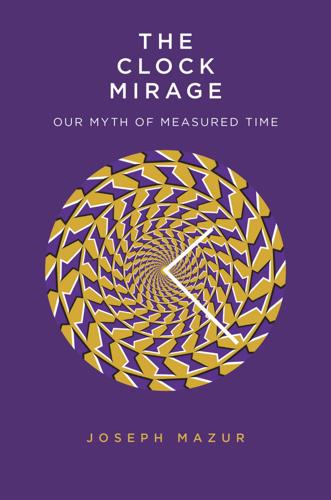
The Clock Mirage: Our Myth of Measured Time
by
Joseph Mazur
Published 20 Apr 2020
You might wonder how the electron can send instant information so far and so fast to a positron. It does so at a speed infinitely faster than the speed of light! Or so it appears. There seems to be some sort of synchronization of operations between two objects that are not local to each other. Einstein knew about this theory that is now dubbed quantum entanglement; with skepticism he said, “Physics should represent reality in time and space, free from spooky actions at a distance.”10 The surprise is that there is some exchange of information, at least quantum information, but not energy transfer. This is the spooky thing that we have trouble getting our heads around.
…
See Time perception Phaseolus, 188–89 Photons, 58 Physiological time, 202 Pineal gland, 177, 179, 182 Planck, Max, 57 Planck time, 57 Plants, internal clock in, 187–88 Plato, 52 on birth of time, 63–64 Parmenides, 49 Timaeus, 43, 63 Plautus, Comedies of Plautus, 4 Playfair, John, 66 Playfair’s axiom, 66 Pocket watches, 27 Poincaré, Henri, 89, 91, 95, 105–6 Poole, Robert, 31 Pöppel, Ernst, 169 Positron, 111 Pound-Rebka experiment, 129 Prague Astronomical Clock, 11–12, 20–21, 22 Present and future, 138 Printing press, 76–77 Prisoners, time perception of, 60–62, 73–74, 82–83 Proclus, 49 Proton, 131 Proust, Marcel, 160 Proxima Centauri b, 219–22 Psychochronometry model, of time perception, 154, 201 Ptolemy, 79 Almagest, 33 Pythagoras, 50 Pythagorean theorem, 235n6 Quantum entanglement, 111 Quantum mechanics, 57–58 Questioning time, 47–48, 141 Railroad timetables, 27 Rational numbers, 53–54, 55 Reddick, Tyler, 17 Red dwarf stars, 218, 219 Relative motion, 87, 95, 102 Relative time, 86 Relativity theory, of Einstein, 70, 93, 94, 95, 97, 101, 110–11, 129 Repeat Performance (film), 130 Retina, 178, 179, 180, 182 Reversal of time, 121–23, 130, 131–32 Richard of Wallingford, 19 Rigarro, Rodrigo, 197–98 RNA, in circadian system, 191 Rome: and paganism, 75 timekeeping in, 4, 6, 8, 11 Rosbash, Michael, 190–91 Rotational motion, 87–88 Russell, Bertrand, 49 Růže, Jan, 20, 21 Scheiner, Christoph, Oculus hoc est, 178 Schmitt, Harrison, 32–33 Schneider, Marvin, 11 Second law of thermodynamics, 130–31 Sense of time.
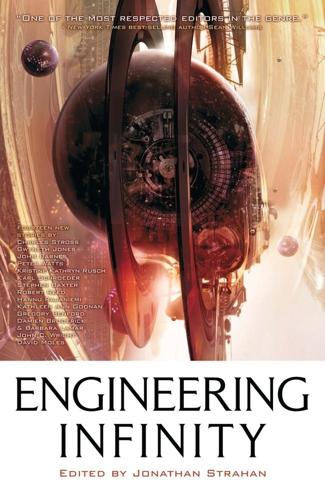
Engineering Infinity
by
Jonathan Strahan
Published 28 Dec 2010
But it was enough to trigger the server's instincts. One of its statites glowed with waste heat as it suddenly reassembled itself into the funnel of a vast linear decelerator. The next instant, the data packet came. Massing only a few micrograms, it was a clump of condensed matter with long-lived gauge field knots inside, quantum entangled with a counterpart half a million light years away. The packet hurtled into the funnel almost at the speed of light. As gently as it could, the server brought the traveller to a halt with electromagnetic fields and fed it to the quantum teleportation system, unused for countless millennia. The carrier signal followed, and guided by it, the server performed a delicate series of measurements and logic gate operations on the packet's state vector.
…
Sit down, Dr Watson. I can't stay long, and we have a lot to cover." Tzvetan Toshtenov, with surprising levity (of a rather heavy-handed kind, I supposed, although I had no notion what it meant), wore a tee-shirt urging me to Please adjust your priors before leaving the QBicle. "What do you know about quantum entanglement and Bayesian probability theory?" I gave him a sour look. "If we're going to play one-upmanship, Schrödinger, what do you know about, oh, the imbricated relationship between the Real, the Symbolic and the Imaginary?" He looked at me suspiciously. "As in imaginary time? The teh dimension?
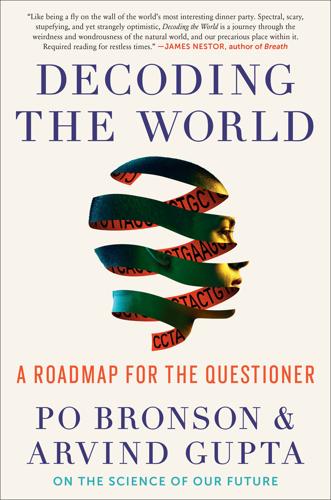
Decoding the World: A Roadmap for the Questioner
by
Po Bronson
Published 14 Jul 2020
But then we start yelling at them, getting them excited to fight the other guy, and they get pumped up, intense, ready to go. And now, because we’ve cooled them and excited them, they can use the Force to fight the other fighter, from two different cages, at a distance. One punches, the other ducks; one kicks, the other blocks. “The Force,” like in Star Wars. For quantum entanglement. Clem allowed it. And Moses is saying, “I can see it, I can see it.” Now we’ve got four electron fighters going, simultaneously. And even though they’re sparring, entangled, they’re all part of one information system. So how can we use this system to solve something interesting? Imagine you’re Dana White.
…
And you only find out what matters the most on Election Day. We even did a version where we imagined selling a quantum computer in a sixty-second cable television ad. A single electron can hold a billion times more information than a transistor. But wait! There’s more! For the same $19.99 price, you also get Quantum Entanglement, which gives every electron a billion times a billion in information! Act now and dial… The main beats of the pattern are: Trap the electrons. Cool them down to control them. Energize them to entangle the electrons in one system. Run your program by adding precise tones of energy. Observe their energy.
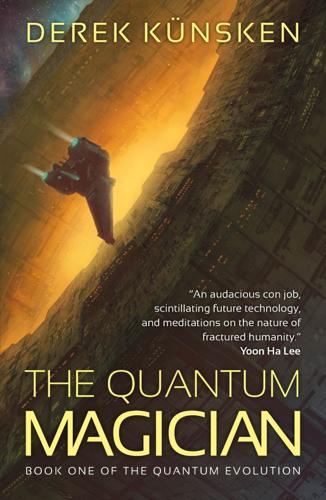
The Quantum Magician
by
Derek Künsken
Published 1 Oct 2018
He removed one of his buttons from his jacket. It reflected the colored holographic light. “I took off one of these when I put on my vacuum suit,” he said. “I left it outside the Mutapa before you brought us to the Jonglei. Inside the button, in a magnetic trap shielded from thermal vibrations, are a few dozen particles in quantum entanglement with the particles in here.” Iekanjika’s hand, bigger than his, closed around his wrist and held the button close to his face. Her face neared. He flinched away from the complexity of her expression and met the barrel of a sidearm. “You left a tracking device at the Mutapa?” She was so angry.
…
Like an array of radio telescopes emulating a single large telescope, these tiny threads of entangled probability created an image three hundred and twenty light years across. The quantum intellect perceived the region around Port Stubbs, the region around the Free City, and the tunnel connecting them through hyperspace, as one great region of space-time, knit by quantum entanglement. The observations, the knowledge, the perspective, were transcendent. And while it peered at the world, the quantum intellect began ordering the Limpopo’s systems to induce the wormhole that would open in the throat of the Puppet Axis. Chapter Sixty-Five MARIE SQUIRMED AGAINST the chafing harness in the first inflaton racer.
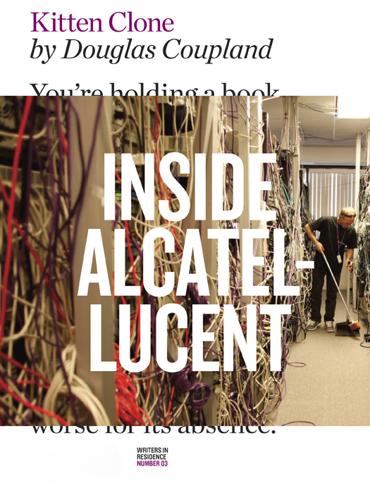
Kitten Clone: Inside Alcatel-Lucent
by
Douglas Coupland
Published 29 Sep 2014
And although she’s heavily involved in the next generations of technology, a part of her looks back with nostalgia at the pre-Bubble era: “All of the great leaps of telecom were made in the late 1990s.” This saddens me, too, but as I only have a few more minutes with Arney, I ask if there’s a possibility for future leaps. She agrees that quantum computing is inevitable. “Quantum entangling. Einstein called the effect spooky.” Before I leave, she tells me a fun fact: If your parents were working on the Manhattan Project, your birth certificate shows that you were born in a U.S. post office box. Imagine that: being born in a post office box. It’s like being born in Antarctica.
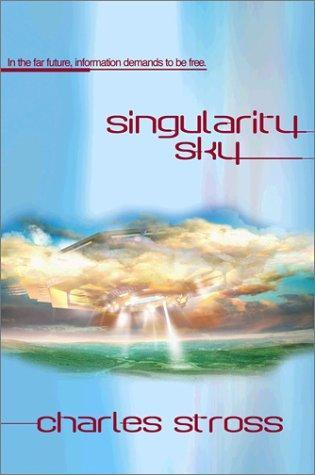
Singularity Sky
by
Stross, Charles
Published 28 Oct 2003
Begins: Assume enemy warships ahead, break. Initiate fire on contact with hostiles, break. For the glory of the empire. Ends. Sent via causal channel to all sister ships." The causal channels between the ships would die, their contents hopelessly scrambled, as soon as the ships made their first jump between equipotential points: quantum entanglement was a fragile phenomenon and couldn't survive faster-than-light transitions. Mirsky nodded. "Acknowledge it. Exec, bring us battle stations." Alarms began to honk mournfully throughout the ship. "Reference frame trap executed." Relativistics. "Jump field engaged. We have a white box in group B, repeat, white box in B."
…
It would soon be time to move on; the first tentative transmissions from Trader clades had been detected, burbling and chirping in the Oort cloud, and the job of opening up communications with this civilization was nearly done. Each of the hundreds of starwisps the high-orbit launchers were dispatching carried one end of a causal channel: a black box containing a collection of particles in a quantum-entangled state with antiparticles held by the Festival. (By teleporting the known quantum state of a third particle into one of the entangled particles, data could be transmitted between terminals infinitely fast, using up one entangled quantum dot for each bit.) Once the starwisps arrived at their destinations, the channels would be hooked into the communications grid the Festival's creators had set out to construct.
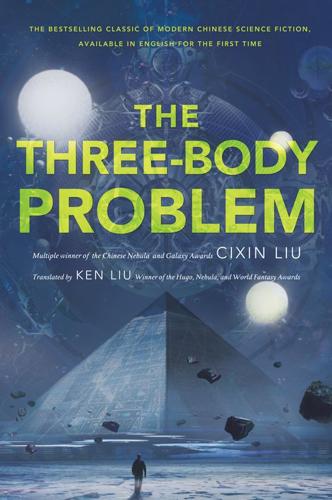
The Three-Body Problem (Remembrance of Earth's Past)
by
Cixin Liu
Published 11 Nov 2014
Thus, even if the actual target particle is occasionally struck, Earth physicists will not be able to tell the correct result from the numerous erroneous results.” “Wouldn’t this destroy the sophon as well?” asked the military consul. “No. When a sophon is smashed into several pieces, several new sophons are born. And they continue to have secure quantum entanglements between them, just like how, if you break a magnet in half, you would get two magnets. Even though each partial sophon’s capabilities will be much lower than the original, whole sophon, under the direction of the self-healing software, the pieces will move together and reassemble into the original sophon.
…
The software for accomplishing these is still being developed, but these ‘miracles’ will create a mood sufficient to divert human scientific thought onto the wrong path. This way, we can use the Miracle Plan to effectively restrain scientific endeavors outside of physics on Earth.” “One last question: Why not send all four of the completed sophons to Earth?” “Quantum entanglement can work at a distance. Even if four sophons were placed at opposite ends of the universe, they could still sense each other instantaneously, and the quantum formation between them would still exist. Keeping Sophon Three and Sophon Four here will enable them to receive the information sent back by Sophon One and Sophon Two instantaneously.
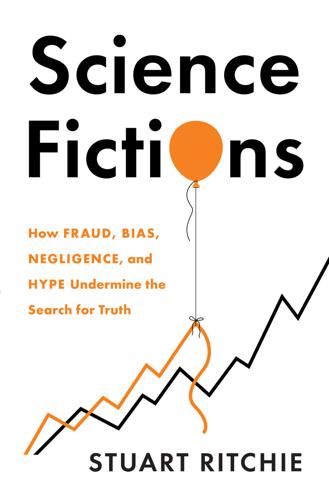
Science Fictions: How Fraud, Bias, Negligence, and Hype Undermine the Search for Truth
by
Stuart Ritchie
Published 20 Jul 2020
William Shakespeare, Henry IV, 1.3.1.59 As I write this, astrophysicists have recently taken the first photograph of a black hole.1 Medical geneticists have announced that seven children with severe immune deficiencies, who’d been forced to live in isolation lest they catch a common – but for them, deadly – infection, might have been cured by gene therapy; and that gene-based therapies for cystic fibrosis have shown results that imply they could work for 90 per cent of people with the condition.2 Public health researchers have shown that, for HIV-positive gay men who are taking the latest antiretroviral drugs, the chance of transmitting the virus to a sexual partner is ‘effectively zero’.3 Engineers have teleported information within a diamond using quantum entanglement.4 Scientists have injected nanoparticles into the eyes of mice, giving them infrared vision.5 These are all marvels and to see them amid a stream of scientific and medical progress is a regular reminder that science is one of humanity’s proudest achievements. Or, at least, they should be marvels.
…
ABC News abortion Abu Ghraib prison abuse (2003) accidental discoveries Acta Crystallographica Section E acupuncture Afghan hounds Agence France-Presse AIDS (acquired immune deficiency syndrome) Alchemist, The (Bega) Alexander, Benita Alexander, Scott algorithms allergies Alzheimer, Aloysius Alzheimer’s Disease Amazon American Journal of Potato Research Amgen amygdala amyloid cascade hypothesis anaesthesia awareness Fujii affair (2012) outcome switching Anaesthesia & Analgesia animal studies antidepressants antipsychotics archaeology Arnold, Frances arsenic artificial tracheas asthma austerity Australia Austria autism aviation Babbage, Charles Bacon, Francis bacteria Bargh, John Bayer Bayes, Thomas Bayesian statistics BDNF gene Before You Know It (Bargh) Bega, Cornelis Begley, Sharon Belgium Bell Labs Bem, Daryl benzodiazepines bias blinding and conflict of interest De Vries’ study (2018) funding and groupthink and meaning well bias Morton’s skull studies p-hacking politics and publication bias randomisation and sexism and Bik, Elisabeth Bill & Melinda Gates Foundation Biomaterials biology amyloid cascade hypothesis Bik’s fake images study (2016) Boldt affair (2010) cell lines China, misconduct in Hwang affair (2005–6) Macchiarini affair (2015–16) meta-scientific research microbiome studies Morton’s skull studies Obokata affair (2014) outcome switching preprints publication bias replication crisis Reuben affair (2009) spin and statistical power and Summerlin affair (1974) Wakefield affair (1998–2010) biomedical papers bird flu bispectral index monitor black holes Black Lives Matter blinding blotting BMJ, The Boldt, Joachim books Borges, Jorge Luis Boulez, Pierre Boyle, Robert brain imaging Brass Eye vii British Medical Journal Brock, Jon bronchoscopy Broockman, David Brown, Nick Bush, George Walker business studies BuzzFeed News California Walnut Commission California wildfires (2017) Canada cancer cell lines collaborative projects faecal transplants food and publication bias and replication crisis and sleep and spin and candidate genes carbon-based transistors Cardiff University cardiovascular disease Carlisle, John Carlsmith, James Carney, Dana cash-for-publication schemes cataracts Cell cell lines Cell Transplantation Center for Open Science CERN (Conseil Européen pour la Recherche Nucléaire) chi-squared tests childbirth China cash-for-publication schemes cell line mix-ups in Great Famine (1959–1961) misconduct cases in randomisation fraud in chrysalis effect Churchill, Winston churnalism Cifu, Adam citations clickbait climate change cloning Clostridium difficile cochlear implants Cochrane Collaboration coercive citation coffee cognitive dissonance cognitive psychology cognitive tests coin flipping Colbert Report, The Cold War collaborative projects colonic irrigation communality COMPare Trials COMT gene confidence interval conflict of interest Conservative Party conspicuous consumption Cooperative Campaign Analysis Project (CCAP) ‘Coping with Chaos’ (Stapel) Cornell University coronavirus (COVID-19) Corps of Engineers correlation versus causation corticosteroids Cotton, Charles Caleb creationism Crowe, Russell Csiszar, Alex Cuddy, Amy CV (curriculum vitae) cyber-bullying cystic fibrosis Daily Mail Daily Telegraph Darwin Memorial, The’ (Huxley) Darwin, Charles Das, Dipak datasets fraudulent Observational publication bias Davies, Phil Dawkins, Richard De Niro, Robert De Vries, Ymkje Anna debt-to-GDP ratio Deer, Brian democratic peace theory Denmark Department of Agriculture, US depression desk rejections Deutsche Bank disabilities discontinuous mind disinterestedness DNA (deoxyribonucleic acid) domestication syndrome doveryai, no proveryai Duarte, José Duke University duloxetine Dutch Golden Age Dutch Organisation for Scientific Research Dweck, Carol economics austerity preprints statistical power and effect size Einstein, Albert Elmo Elsevier engineering epigenetics euthanasia evolutionary biology exaggeration exercise Experiment, The exploratory analyses extrasensory perception faecal transplants false-positive errors Fanelli, Daniele Festinger, Leon file-drawer problem financial crisis (2007–8) Fine, Cordelia Fisher, Ronald 5 sigma evidence 5-HT2a gene 5-HTTLPR gene fixed mindset Food and Drug Administration (FDA) Food Frequency Questionnaires food psychology Formosus, Pope foxes France Francis, Pope Franco, Annie fraud images investigation of motives for numbers Open Science and peer review randomisation Freedom of Information Acts French, Chris Fryer, Roland Fujii, Yoshitaka funding bias and fraud and hype and long-term funding perverse incentive and replication crisis and statistical power and taxpayer money funnel plots Future of Science, The (Nielsen) gay marriage Gelman, Andrew genetically modified crops genetics autocorrect errors candidate genes collaborative projects gene therapy genome-wide association studies (GWASs) hype in salami-slicing in Geneva, Switzerland geoscience Germany Getty Center GFAJ-1 Giner-Sorolla, Roger Glasgow Effect Goldacre, Ben Goldsmiths, University of London Golgi Apparatus good bacteria Good Morning America good scientific citizenship Goodhart’s Law Goodstein, David Google Scholar Górecki, Henryk Gould, Stephen Jay Gran Sasso, Italy grants, see funding Granularity-Related Inconsistency of Means (GRIM) grapes Great Recession (2007–9) Great Red Spot of Jupiter Green, Donald Gross Domestic Product (GDP) Gross, Charles ground-breaking results groupthink ‘Growth in a Time of Debt’ (Reinhart and Rogoff) growth mindset Guzey, Alexey gynaecology h-index H5N1 Haldane, John Burdon Sanderson Hankins, Matthew HARKing Harris, Sidney Harvard University headache pills heart attacks heart disease Heathers, James height Heilongjiang University Heino, Matti Henry IV (Shakespeare) Higgs Boson Hirsch, Jorge HIV (human immunodeficiency viruses) homosexuality Hong Kong Hooke, Robert Hossenfelder, Sabine Houston, Texas Hume, David Huxley, Thomas Henry Hwang, Woo-Suk hydroxyethyl starch hype arsenic life affair (2010) books correlation versus causation cross-species leap language and microbiome studies news stories nutrition and press releases spin unwarranted advice hypotheses Ig Nobel Prize images, fraudulent impact factor India insomnia International Journal of Advanced Computer Technology Ioannidis, John IQ tests Iraq War (2003–11) Italy Japan John, Elton Journal of Cognitive Education and Psychology Journal of Environmental Quality Journal of Negative Results in Biomedicine Journal of Personality and Social Psychology journals conflict of interest disclosure fraud and hype and impact factor language in mega-journals negligence and Open Science and peer review, see peer review predatory journals preprints publication bias rent-seeking replication studies retraction salami slicing subscription fees Jupiter Kahneman, Daniel Kalla, Joshua Karolinska Institute Krasnodar, Russia Krugman, Paul Lacon, or Many Things in Few Words (Cotton) LaCour, Michael Lancet Fine’s ‘feminist science’ article (2018) Macchiarini affair (2015–16) Wakefield affair (1998–2010) language Large Hadron Collider Le Texier, Thibault Lewis, Jason Lexington Herald-Leader Leyser, Ottoline Lilienfeld, Scott Loken, Eric Lost in Math (Hossenfelder) low-fat diet low-powered studies Lumley, Thomas Lysenko, Trofim Macbeth (Shakespeare) Macbeth effect Macchiarini, Paolo MacDonald, Norman machine learning Macleod, Malcolm Macroeconomics major depressive disorder Malaysia Mao Zedong MARCH1 Marcus, Adam marine biology Markowetz, Florian Matthew Effect Maxims and Moral Reflections (MacDonald) McCartney, Gerry McCloskey, Deirdre McElreath, Richard meaning well bias Measles, Mumps & Rubella (MMR) measurement errors Medawar, Peter medical research amyloid cascade hypothesis Boldt affair (2010) cell lines China, misconduct in collaborative projects Fujii affair (2012) Hwang affair (2005–6) Macchiarini affair (2015–16) meta-scientific research Obokata affair (2014) outcome switching pharmaceutical companies preprints pre-registration publication bias replication crisis Reuben affair (2009) spin and statistical power and Summerlin affair (1974) Wakefield affair (1998–2010) medical reversal Medical Science Monitor Mediterranean Diet Merton, Robert Mertonian Norms communality disinterestedness organised scepticism universalism meta-science Boldt affair (2010) chrysalis effect De Vries’ study (2018) Fanelli’s study (2010) Ioannidis’ article (2005) Macleod’s studies mindset studies (2018) saturated fats studies spin and stereotype threat studies mice microbiome Microsoft Excel Milgram, Stanley Mill, John Stuart Mindset (Dweck) mindset concept Mismeasure of Man, The (Gould) Modi, Narendra money priming Mono Lake, California Moon, Hyung-In Morton, Samuel Motyl, Matt multiverse analysis nanotechnology National Academy of Sciences National Aeronautics and Space Administration (NASA) National Institutes of Health National Science Foundation Nature cash-for-publication and cell line editorial (1981) impact factor language in Obokata affair (2014) Open Access and open letter on statistical significance (2019) replication research Schön affair (2002) Stapel affair (2011) Nature Neuroscience Nature Reviews Cancer NBC negligence cell line mix-ups numerical errors statistical power typos Netflix Netherlands replication studies in Stapel’s racism studies statcheck research neuroscience amyloid cascade hypothesis collaborative projects Macleod’s animal research studies replication crisis sexism and statistical significance and Walker’s sleep studies neutrinos New England Journal of Medicine New York Times New Zealand news media Newton, Isaac Nielsen, Michael Nimoy, Leonard No Country for Old Men Nobel Prize northern blots Nosek, Brian Novella, Steven novelty Novum Organum (Bacon) Nuijten, Michèle nullius in verba, numerical errors nutrition Obama, Barack obesity Obokata, Haruko observational datasets obstetrics ocean acidification oesophagus ‘Of Essay-Writing’ (Hume) Office for Research Integrity, US Oldenburg, Henry Open Access Open Science OPERA experiment (2011) Oransky, Ivan Orben, Amy Organic Syntheses organised scepticism Osborne, George outcome-switching overfitting Oxford University p-value/hacking alternatives to Fine and low-powered studies and microbiome studies and nutritional studies and Open Science and outcome-switching perverse incentive and pre-registration and screen time studies and spin and statcheck and papers abstracts citations growth rates h-index introductions method sections results sections salami slicing self-plagiarism university ranks and Parkinson’s disease particle-accelerator experiments peanut allergies peer review coercive citation fraudulent groupthink and LaCour affair (2014–15) Preprints productivity incentives and randomisation and toxoplasma gondii scandal (1961) volunteer Wakefield affair (1998–2010) penicillin Peoria, Illinois Perspectives in Psychological Science perverse incentive cash for publications competition CVs and evolutionary analogy funding impact factor predatory journals salami slicing self-plagiarism Pett, Joel pharmaceutical companies PhDs Philosophical Transactions phlogiston phosphorus Photoshop Physical Review physics placebos plagiarism Plan S Planck, Max plane crashes PLOS ONE pluripotency Poehlman, Eric politics polygenes polyunsaturated fatty acids Popper, Karl populism pornography positive feedback loops positive versus null results, see publication bias post-traumatic stress disorder (PTSD) power posing Prasad, Vinay pre-registration preclinical studies predatory journals preprints Presence (Cuddy) press releases Prevención con Dieta Mediterránea (PREDIMED) priming Princeton University Private Eye probiotics Proceedings of the National Academy of Sciences prosthetic limbs Przybylski, Andrew psychic precognition Psychological Medicine psychology Bargh’s priming study (1996) Bem’s precognition studies books Carney and Cuddy’s power posing studies collaborative projects data sharing study (2006) Dweck’s mindset concept Festinger and Carlsmith’s cognitive dissonance studies Kahneman’s priming studies LaCour’s gay marriage experiment politics and preprints publication bias in Shanks’ priming studies Stanford Prison Experiment Stapel’s racism studies statistical power and Wansink’s food studies publication bias publish or perish Pubpeer Pythagoras’s theorem Qatar quantum entanglement racism Bargh’s priming studies Morton’s skull studies Stapel’s environmental studies randomisation Randy Schekman Reagan, Ronald recommendation algorithms red grapes Redfield, Rosemary Reflections on the Decline of Science in England (Babbage) Reinhart, Carmen Rennie, Drummond rent-seeking replication; replication crisis Bargh’s priming study Bem’s precognition studies biology and Carney and Cuddy’s power posing studies chemistry and economics and engineering and geoscience and journals and Kahneman’s priming studies marine biology and medical research and neuroscience and physics and Schön’s carbon-based transistor Stanford Prison Experiment Stapel’s racism studies Wolfe-Simon’s arsenic life study reproducibility Republican Party research grants research parasites resveratrol retraction Arnold Boldt Fujii LaCour Macchiarini Moon Obokata Reuben Schön Stapel Wakefield Wansink Retraction Watch Reuben, Scott Reuters RIKEN Rogoff, Kenneth romantic priming Royal Society Rundgren, Todd Russia doveryai, no proveryai foxes, domestication of Macchiarini affair (2015–16) plagiarism in salami slicing same-sex marriage sample size sampling errors Sanna, Lawrence Sasai, Yoshiki saturated fats Saturn Saudi Arabia schizophrenia Schoenfeld, Jonathan Schön, Jan Hendrik School Psychology International Schopenhauer, Arthur Science acceptance rate Arnold affair (2020) arsenic life affair (2010) cash-for-publication and Hwang affair (2005) impact factor LaCour affair (2014–15) language in Macbeth effect study (2006) Open Access and pre-registration investigation (2020) replication research Schön affair (2002) Stapel affair (2011) toxoplasma gondii scandal (1961) Science Europe Science Media Centre scientific journals, see journals scientific papers, see papers Scientific World Journal, The Scotland Scottish Socialist Party screen time self-citation self-correction self-plagiarism self-sustaining systems Seoul National University SEPT2 Sesame Street sexism sexual selection Shakespeare, William Shanks, David Shansky, Rebecca Simmons, Joseph Simonsohn, Uri Simpsons, The skin grafts Slate Star Codex Sloan-Kettering Cancer Institute Smaldino, Paul Smeesters, Dirk Smith, Richard Snuppy social media South Korea Southern blot Southern, Edwin Soviet Union space science special relativity specification-curve analysis speed-accuracy trade-off Spies, Jeffrey spin Springer Srivastava, Sanjay Stalin, Joseph Stanford University Dweck’s mindset concept file-drawer project (2014) Prison Experiment (1971) Schön affair (2002) STAP (Stimulus-Triggered Acquisition of Pluripotency) Stapel, Diederik statcheck statistical flukes statistical power statistical significance statistical tests Status Quo stem cells Stephen VI, Pope stereotype threat Sternberg, Robert strokes subscription fees Summerlin, William Sweden Swift, Jonathan Swiss Federal Institute of Technology Sydney Morning Herald Symphony of Sorrowful Songs (Górecki) t-tests Taiwan taps-aff.co.uk tax policies team science TED (Technology, Entertainment, and Design) Texas sharpshooter analogy Thatcher, Margaret theory of special relativity Thinking, Fast and Slow (Kahneman) Thomson Reuters Tilburg University Titan totalitarianism toxoplasma gondii trachea translational research transparency Tribeca Film Festival triplepay system Trump, Donald trust in science ‘trust, but verify’ Tumor Biology Turkey Tuulik, Julia Twitter typos UK Reproducibility Network Ulysses pact United Kingdom austerity cash-for-publication schemes image duplication in multiverse analysis study (2019) National Institute for Health Research pre-registration in Royal Society submarines trust in science university ranks in Wakefield affair (1998–2010) United States Arnold affair (2020) arsenic life affair (2010) austerity Bargh’s priming study (1996) Bem’s precognition studies California wildfires (2017) Carney and Cuddy’s power posing studies Center for Nutrition Policy and Promotion climate science in creationism in Das affair (2012) De Vries’ drug study (2018) Department of Agriculture Dweck’s mindset concept Fryer’s police brutality study (2016) image duplication in Kahneman’s priming studies LaCour affair (2014–15) Morton’s skull studies Office for Research Integrity Poehlman affair (2006) pre-registration in public domain laws Reuben affair (2009) Stanford Prison Experiment Summerlin affair (1974) tenure Walker’s sleep studies Wansink affair (2016) universalism universities cash-for-publication schemes fraud and subscription fees and team science University College London University of British Columbia University of California Berkeley Los Angeles University of Connecticut University of East Anglia University of Edinburgh University of Hertfordshire University of London University of Pennsylvania unsaturated fats unwarranted advice vaccines Vamplew, Peter Vanity Fair Vatican Vaxxed Viagra vibration-of-effects analysis virology Wakefield, Andrew Walker, Matthew Wansink, Brian Washington Post weasel wording Weisberg, Michael Wellcome Trust western blots Westfall, Jake ‘Why Most Published Research Findings Are False’ (Ioannidis) Why We Sleep (Walker) Wiley Wiseman, Richard Wolfe-Simon, Felisa World as Will and Presentation, The (Schopenhauer) World Health Organisation (WHO) Yale University Yarkoni, Tal Yes Men Yezhov, Nikolai Z-tests Ziliak, Stephen Zimbardo, Philip Zola, Émile About the Author Stuart Ritchie is a lecturer in the Social, Genetic and Developmental Psychiatry Centre at King’s College London.
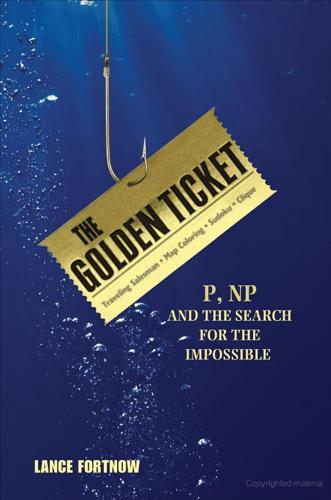
The Golden Ticket: P, NP, and the Search for the Impossible
by
Lance Fortnow
Published 30 Mar 2013
Small errors both increase the number of quantum bits needed as well as open up the possibility that Esther could do some cheating and remain undetected. A series of more sophisticated protocols have been developed to handle those challenges. Unlike quantum computing, the basic Bennett-Brassard protocol does not require quantum entanglement, and also unlike quantum computing, there are working implementations of medium-scale quantum cryptography. Researchers at Los Alamos have successfully sent messages over ninety-two miles through fiber optic cables. Others have sent messages between two of the Canary Islands through the air, a distance of nearly ninety miles.
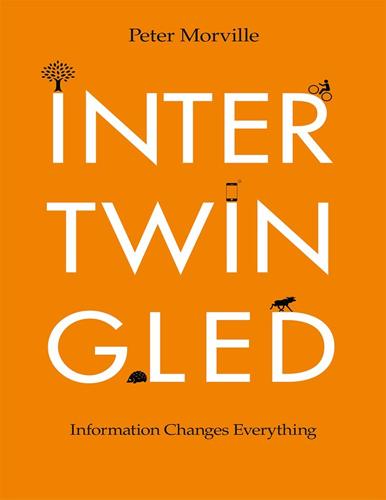
Intertwingled: Information Changes Everything
by
Peter Morville
Published 14 May 2014
Researchers are exploring the use of entanglement for communication and computation. Recently, Dutch physicists were able to teleport quantum data over a ten foot distance with a replication rate of 100 percent.cxlvi It appears that Albert Einstein was wrong. Figure 5-12. The consequence of quantum entanglement. In his book, Yanofsky explains the philosophical consequences of the nonlocal effects of entanglement. One consequence of entanglement is to end the philosophical position of reductionism. This position says that if you want to understand some type of closed system, look at all the parts of the system.
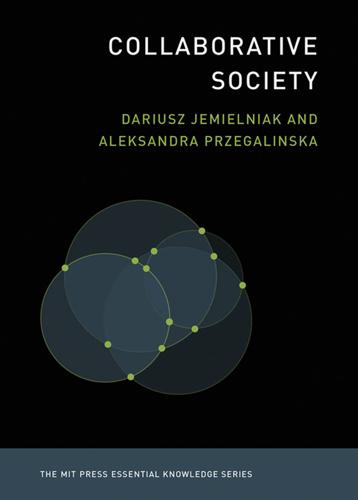
Collaborative Society
by
Dariusz Jemielniak
and
Aleksandra Przegalinska
Published 18 Feb 2020
Cortada Intellectual Property Strategy, John Palfrey The Internet of Things, Samuel Greengard Irony and Sarcasm, Roger Kreuz Machine Learning: The New AI, Ethem Alpaydin Machine Translation, Thierry Poibeau Macroeconomics, Felipe Larraín B. Memes in Digital Culture, Limor Shifman Metadata, Jeffrey Pomerantz The Mind–Body Problem, Jonathan Westphal MOOCs, Jonathan Haber Neuroplasticity, Moheb Costandi Nihilism, Nolen Gertz Open Access, Peter Suber Paradox, Margaret Cuonzo Post-Truth, Lee McIntyre Quantum Entanglement, Jed Brody Recycling, Finn Arne Jørgensen Robots, John Jordan School Choice, David R. Garcia Self-Tracking, Gina Neff and Dawn Nafus Sexual Consent, Milena Popova Smart Cities, Germaine R. Halegoua Spaceflight, Michael J. Neufeld Spatial Computing, Shashi Shekhar and Pamela Vold Sustainability, Kent E.
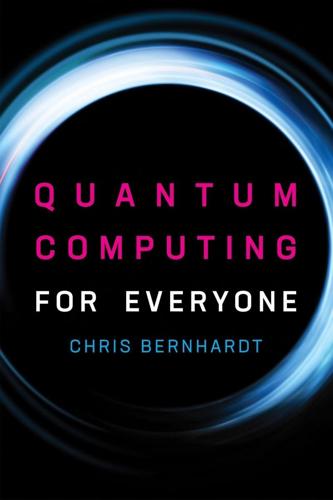
Quantum Computing for Everyone
by
Chris Bernhardt
Published 19 Mar 2019
We will explain more about this in a moment, but essentially local realism means that a particle can only be influenced by something changing in its vicinity. Practically all of us are local realists, but quantum mechanics shows us that we are wrong. Einstein’s model seems to us to be the natural and correct model—at least it does to me. When I first heard of quantum entanglement, my natural assumption was to assume a model similar to Einstein’s. You too might be thinking about entanglement incorrectly. These arguments are important to the philosophy of physics and help us to understand that the mysteriousness cannot be eliminated. John Stewart Bell was an Irish physicist.
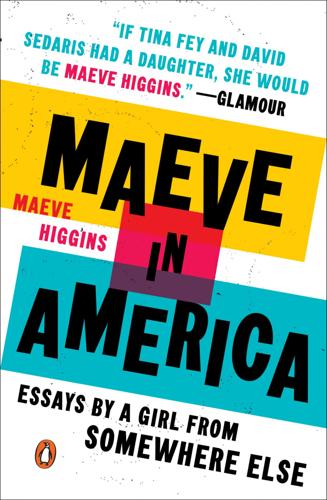
Maeve in America: Essays by a Girl From Somewhere Else
by
Maeve Higgins
Published 6 Aug 2018
The observer effect is a result of the measurement process because the tools we use to measure are cumbersome on a quantum level, and I wonder if my friends would be unaffected if they didn’t see the camera or hear me bellow at them to strike a pose. Or maybe in this case the observing process is some proof of quantum entanglement, that the photons zipping around between people and phones are all jumbled up together. Is my phone a part of me, and vice versa? Whatever the science, I sense that depicting reality gives me a break from reality. After Dublin, I go back to my hometown of Cobh. Walking into the kitchen in my family home from the clear cool air outside is an intense experience for the senses.
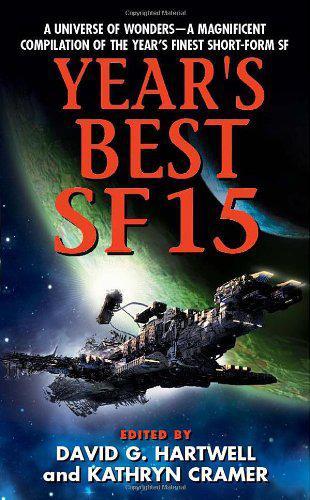
Year's Best SF 15
by
David G. Hartwell; Kathryn Cramer
Published 15 Aug 2010
Since only liars emphasize their truthfulness—enlightened endolas2, of course, represent truth with their very beings—the speaker is openly announcing that he is lying, signaling to the hearer that everything which follows is therefore untrue. In fact, the speaker does give a damn.3 This sort of convoluted speech was often necessary in pre-Collapse4 societies, in which “governments”5 were so politically oppressive that truth could not be openly spoken.6 2850, i Unified Link Information, Quantum-Entangled Energy Center DB 549867207 (Historical) DATUM: “Franklee, my dear, I don’t give a damn.” VARIATIONS: “Frankly, my dear, I don’t give a damn.” “Frankly, my dear, I don’t give a dam.” “Franklee, my der, I dont giv a dam.” CLASSIFICATION: Proverb, class 32 DATE: Pre-QUENTIAM, probably pre-twenty-second century, specifics unknown ORIGIN: Human, Sol 3, specifics unknown LANGUAGES: Many (recite list?).
…
In another it was bought by someone else and never ended up in the museum. In another it was broken before it ever left the factory.” She smiles quickly. “You see the point I’m making. What may be less clear is that all these copies of the same jug are in ghostly dialogue with each other, linked together by a kind of quantum entanglement—though it’s not really quantum and it’s not exactly entanglement.” Another fierce, nervous smile. “Don’t worry: no mathematics tonight! The point is, no matter what happens to this jug, no matter how it’s handled or what it comes into contact with, it never quite loses contact with its counterparts.
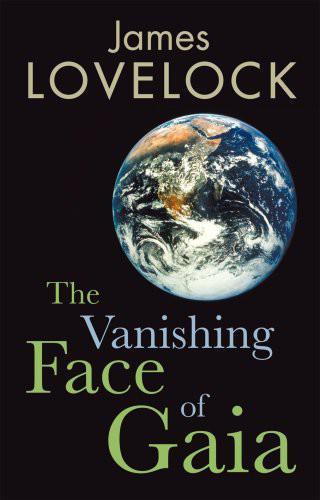
The Vanishing Face of Gaia: A Final Warning
by
James E. Lovelock
Published 1 Jan 2009
Insight they see as the child of intuition, something irrational drawn from a mess of apparently conflicting data. Dislike it they may, but the large steps in science come as often from insight as from rational analysis and synthesis. This is especially true of quantum physics and of the science of living things; indeed it may never be possible to define life or quantum entanglement in rational scientific terms. Charles Darwin recognized by insight that the evolution of all living organisms is governed by natural selection or, as Jacques Monod put it, through the operation of chance and necessity, but it was not until fifty or more years later, and after a lifetime of research and evidence‐gathering by Darwin himself, and later by Mendel, that the full scientific significance of evolution was established by such able men as Fisher, Haldane and Ernst Mayer, and more recently John Maynard Smith, Robert May and Bill Hamilton.
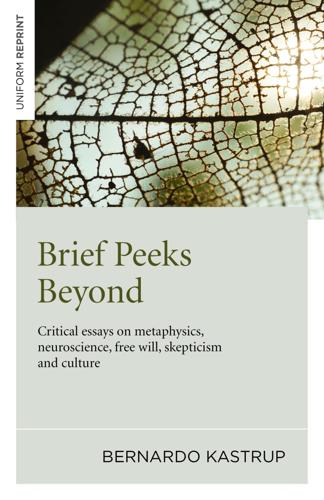
Brief Peeks Beyond: Critical Essays on Metaphysics, Neuroscience, Free Will, Skepticism and Culture
by
Bernardo Kastrup
Published 28 May 2015
Borde, A., Guth, A. and Vilenkin, A. (2003). Inflationary space-times are incomplete in past directions. Physical Review Letters, 90(15), 151301. Breggin, P. R. (2007). Brain Disabling Treatments in Psychiatry: Drugs, Electroshock, and the Psychopharmaceutical Complex. New York, NY: Springer. Bub, J. (2014). Quantum Entanglement and Information. In: Zalta, E. N. ed. The Stanford Encyclopedia of Philosophy (Fall 2014 Edition). [Online]. Available from: http://plato.stanford.edu/archives/fall2014/entries/qt-entangle/ [Accessed 22 December 2014]. Bucke, R. M. (2009). Cosmic Consciousness: A Study in the Evolution of the Human Mind.

Uprooting: From the Caribbean to the Countryside - Finding Home in an English Country Garden
by
Marchelle Farrell
Published 2 Aug 2023
The longer I walk among the space and shed the dust of my self onto the ground around me, the more the place becomes the stuff of me. I welcome our mutual restructuring. These atoms were previously conjoined with others, then bonds broken and reshaped into me. The previous partners of my atoms – where now? But perhaps they are still influencing me, quantum entanglement showing that an atom somewhere else in the world once physically connected to one of mine will resonate with its previous partners’ changes in state. Is it that which drives the inexplicable changes that sometimes hum through me? Is this how we sense things beyond sensing, collective waves of atomic energy pulsing through our forever interconnected selves?

The Girl in the Road
by
Monica Byrne
Published 19 May 2014
But I don’t feel tired. Meanwhile, Lucia passes in and out of sleep, each time with fresh insights from her dreams. Her innocence is starting to grate. Near dawn, she whispers, “Durga … now we’re bound up.” I clench up. This is it. She’s going to cling to me like Arjuna did. “How so?” “It’s like quantum entanglement. Our bodies have exchanged matter and so now we’re interlinked.” She sounds intimate. I deflect. “I didn’t get that far in nano.” “You learn it second year!” I have to lie again. She’s making me lie. “I switched to comp lit after my first year.” “Oh. Well, it means that if we think of our bodies as particles, our states are the same right now, but then when we separate, we remain entangled.
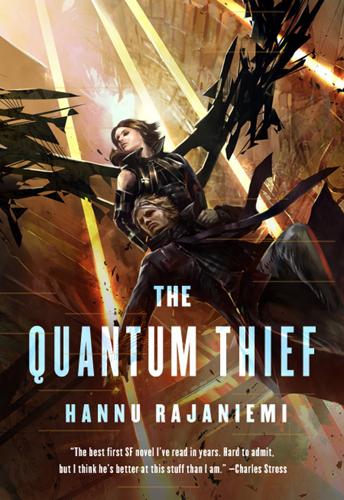
The Quantum Thief
by
Hannu Rajaniemi
Published 1 Jan 2010
I hate it so much when they catch you. pull him up from the sand, roughly. The soldier backhands him across his face, and then the others raise their rifles— not at all as much fun as stealing from a mind made of diamond. The god of thieves hides inside thinking dust threaded together by quantum entanglements. He tells the diamond mind lies until it believes he is one of its thoughts and lets him in. up— The people who are many have made worlds that shine and glitter, as if just for him, and he just has to reach out his hand and pick them up It’s like dying. And getting out is like a key turning in a lock.

The Fourth Age: Smart Robots, Conscious Computers, and the Future of Humanity
by
Byron Reese
Published 23 Apr 2018
Consider the phenomenon of entanglement, in which two particles are so linked with each other that even if they are separated by the width of the universe, if you perform an action on one of them, its pair reacts instantly, faster than light itself. Even Einstein categorized this phenomenon as “spooky.” When compared with things like quantum entanglement, consciousness doesn’t seem all that strange. If this is the case, if consciousness is a physical property of matter, can a machine achieve it? Yes. In fact, this case is quite straightforward. Once we understand matter better, we will understand consciousness. Under this theory, developing conscious computers would rely not on the transformative alchemy of emergent properties but rather on just a deeper understanding of simple matter.
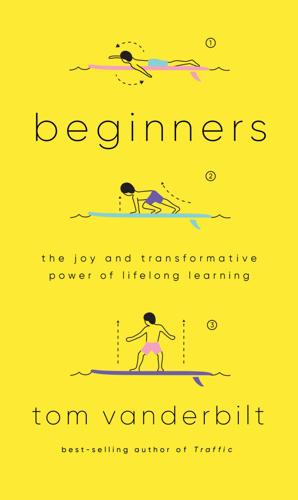
Beginners: The Joy and Transformative Power of Lifelong Learning
by
Tom Vanderbilt
Published 5 Jan 2021
To help me make faster moves in the thirty-minute games, I played five-minute blitz games. To help me get faster in blitz, I played rounds of one-minute “bullet chess.” To get faster at bullet, I tried the truly terrifying “hyper-bullet chess,” lasting all of fifteen seconds. To get faster at hyper-bullet? I would need quantum entanglement. I had other things in my corner. People who study aging and the brain like to talk about two forms of cognitive ability: “fluid” and “crystallized” intelligence. Fluid intelligence helps you think on your feet and solve new problems. Crystallized intelligence is what a person already knows—wisdom, memories, metacognition.
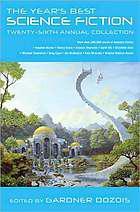
The Year's Best Science Fiction: Twenty-Sixth Annual Collection
by
Gardner Dozois
Published 23 Jun 2009
Every aspect of the entity strained forward, jumping through the vacuum flux in bursts of radiation that appeared now near one star system, now another, now in the deep black cold where no stars exerted gravity. The ship could move no quicker without destroying either nearby star systems or its own coherence. It raced as rapidly as it could, sent ahead of itself even faster tendrils of quantum-entangled information. Faster, faster . . . It was not fast enough. FOUR Thursday morning, Henry’s mind seemed to him as clear as ever. After an early breakfast he sat at his tiny kitchen table, correcting physics papers. The apartments at St. Sebastian’s each had a small eat-in kitchen, a marginally larger living room, a bedroom and bath.
…
He said there were moments when he felt a ‘frightful’ clarity and rapture, and that he would give his whole life for five seconds of that and not feel he was paying too much. Dostoyevsky was an epileptic.” “I know he was an epileptic!” DiBella snapped. Carrie said, “Henry, can you sense it now? That thing that’s coming?” “No. Not at all. Obviously it’s not quantum-entangled in any classical sense.” “Then maybe it’s gone away.” Henry tried to smile at her. “Maybe. But I don’t think so. I think it’s coming for us.” “What do you mean, coming for you?” Geraci said skeptically. “It’s not a button man.” “I don’t know what I mean,” Henry said irritably. “But it’s coming, and soon.
…
‘Of course, the expansion of space is not limited by light-speed,’ Cjatay said. ‘Still you don’t understand.’ A third time, Oga generated the dark energy from the ice beneath his feet and focused it into a narrow beam between the wife-comet and its unimaginably distant husband. Two particles in contact will remain in quantum entanglement no matter how far they are removed, Oga thought. And is that true also for lives? He dismissed the scalarity generator and brought them out in blackness. Complete, impenetrable, all-enfolding blackness, without a photon of light. ‘Do you understand where I have brought you?’ ‘You’ve taken us beyond the visible horizon,’ Cjatay said.
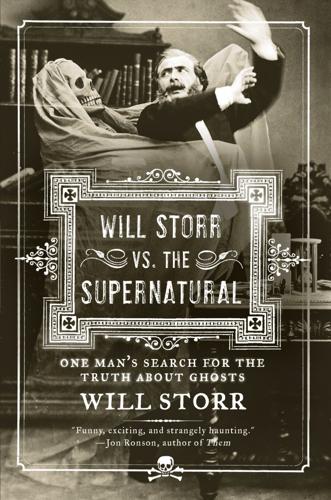
Will Storr vs. The Supernatural: One Man's Search for the Truth About Ghosts
by
Will Storr
Published 4 Sep 2006
It can’t, you see, because it’s part of the quantum level, which is the most basic level in existence. It’s the level on which the very fabric of the universe – matter, energy, space and time – exists. And, what’s more, when they drift free of our microtubules, these little specks of soul don’t separate and float apart: a process called quantum entanglement keeps them bunched together. So, if it’s correct, this elegant nugget of extreme science does appear to show that the mind and the body are separate things – and that they can exist independently. Our brains, these men claim, do not create consciousness. They just channel it, like a television picking up a station.
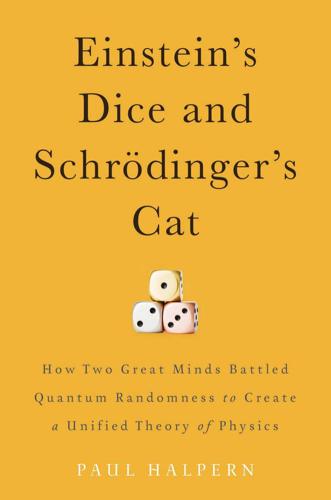
Einstein's Dice and Schrödinger's Cat: How Two Great Minds Battled Quantum Randomness to Create a Unified Theory of Physics
by
Paul Halpern
Published 13 Apr 2015
Einstein warmly invited Schrödinger to his summer home in Caputh and continued to offer guidance in their extensive correspondence. The EPR thought experiment, developed by Einstein and his assistants Boris Podolsky 7 Einstein’s Dice and Schrödinger’s Cat and Nathan Rosen to illustrate murky aspects of quantum entanglement, along with a suggestion by Einstein about a quantum paradox involving gunpowder, helped inspire Schrödinger’s cat conundrum. Finally, the ideas developed by Schrödinger in his quest for unification were variations of proposals by Einstein. The two theorists frequently corresponded about ways to tweak general relativity to make it mathematically flexible enough to encompass other forces besides gravity.
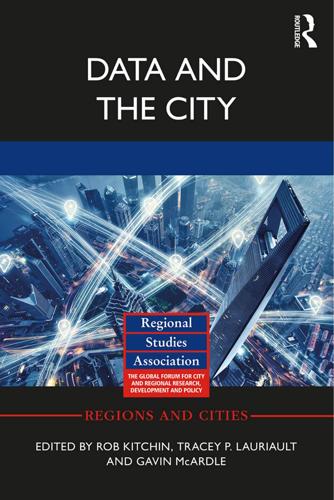
Data and the City
by
Rob Kitchin,Tracey P. Lauriault,Gavin McArdle
Published 2 Aug 2017
Aoyama, Y. and Sheppard, E. (2003) ‘The dialectics of geographic and virtual space’, Environment and Planning A 35(7): 1151–1156. Barad, K. (2003) ‘Posthumanist performativity: Toward an understanding of how matter comes to matter’, Signs: Journal of Women in Culture and Society 28(3): 801–831. Barad, K. (2010) ‘Quantum entanglements and hauntological relations of inheritance: Dis/continuities, spacetime enfoldings, and justice-to-come’, Derrida Today 3(2): 240–268. Batty, M. (1997) ‘Virtual geography’, Futures 29(4–5): 337–352. Batty, M. and Barr, B. (1994) ‘The electronic frontier: Exploring and mapping cyberspace’, Futures 26(7): 699–712.
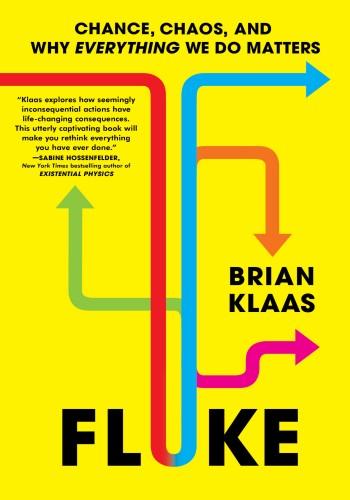
Fluke: Chance, Chaos, and Why Everything We Do Matters
by
Brian Klaas
Published 23 Jan 2024
Conventional interpretations of quantum experiments imply that tiny particles can be in two places at once, a phenomenon called superposition. However, when we observe those particles, they collapse into a single position, suggesting that reality changes depending on whether someone’s looking. Even more mind-boggling, some interpretations of quantum entanglement suggest that twinned particles separated by vast distances nonetheless affect one another instantly—not quickly, but instantly—when one particle is measured, something that Einstein disparagingly referred to as “spooky action at a distance.” We don’t have the vocabulary to explain these phenomena because the behavior of these particles is completely unlike anything we encounter in our directly observable world.
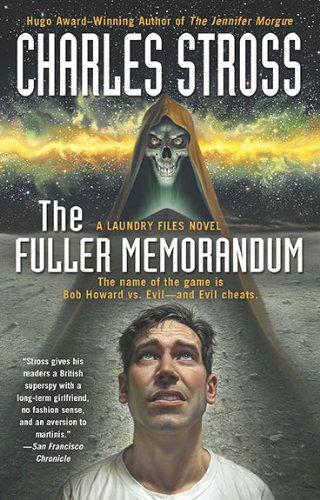
Fuller Memorandum
by
Stross, Charles
Published 14 Jan 2010
The sky is clouding over, the merciless sun shrouded by dirty clouds of doubtful provenance. I keep walking. Item: The Auditors wanted to know about Mo, and about paper clips. I know about paper clips and why they're a security risk. (The laws of contagion and sympathy are fundamental to all systems of magic: quantum entanglement and spooky action-at-a-distance for the witch doctor set. More prosaically, if you've got a paper clip from the same box as a sibling that's clipped to a top secret file . . . you figure it out. Okay?) But why did they want to know about Mo? What was the document she wanted me to retrieve?

Ask Me About My Uterus: A Quest to Make Doctors Believe in Women's Pain
by
Abby Norman
Published 6 Mar 2018
In addition to a course of high-dose prednisone (a very strong anti-inflammatory and immunosuppressive medication), they also offered me Ativan, mainly to help me sleep. Especially if the prednisone gave me insomnia, which was one of a laundry list of somewhat intimidating side effects. Going into the second week of the ordeal, I had to work—even if it meant editing an article on quantum entanglement from my bathroom floor. Not just because I was self-employed and if I didn’t work, I didn’t earn money—but because I was desperate, once again, to assure myself that my identity outside of any illness was still intact. As I lay curled up on a yoga mat draped with an old towel, I needed work—and the joy and sense of purpose it brought me—more than ever.
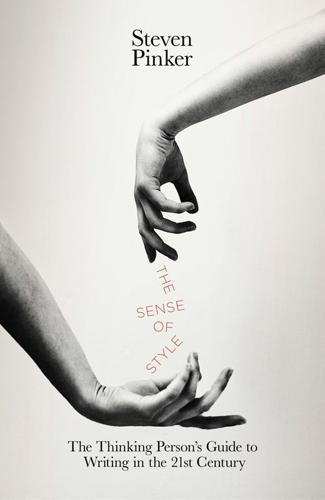
The Sense of Style: The Thinking Person's Guide to Writing in the 21st Century
by
Steven Pinker
Published 1 Jan 2014
The new entries in AHD 5 are a showcase for the linguistic exuberance and recent cultural history of the Anglosphere: Abrahamic, air rage, amuse-bouche, backward-compatible, brain freeze, butterfly effect, carbon footprint, camel toe, community policing, crowdsourcing, Disneyfication, dispensationalism, dream catcher, earbud, emo, encephalization, farklempt, fashionista, fast-twitch, Goldilocks zone, grayscale, Grinch, hall of mirrors, hat hair, heterochrony, infographics, interoperable, Islamofascism, jelly sandal, jiggy, judicial activism, ka-ching, kegger, kerfuffle, leet, liminal, lipstick lesbian, manboob, McMansion, metabolic syndrome, nanobot, neuroethics, nonperforming, off the grid, Onesie, overdiagnosis, parkour, patriline, phish, quantum entanglement, queer theory, quilling, race-bait, recursive, rope-a-dope, scattergram, semifreddo, sexting, tag-team, time-suck, tranche, ubuntu, unfunny, universal Turing machine, vacuum energy, velociraptor, vocal percussion, waterboard, webmistress, wetware, Xanax, xenoestrogen, x-ray fish, yadda yadda yadda, yellow dog, yutz, Zelig, zettabyte, zipline If I were allowed to take just one book to the proverbial desert island, it might be a dictionary.

Human Frontiers: The Future of Big Ideas in an Age of Small Thinking
by
Michael Bhaskar
Published 2 Nov 2021
As I write, I've been leafing through a recent edition of Scientific American. It contains multitudes: the largest ever experiment to detect neutrinos, experiments to find new particles and identify dark matter, pioneering research on supermassive black holes in the early universe, explorations inside neutron stars and studies of quantum entanglement. It doesn't feel like a struggling area, and that isn't the word I'd use. Instead science is both an inspiring success and also subject to increasingly potent diminishing returns, especially in its most radical and fundamental guises. The ‘river of discovery’ flows on, but its character has changed: the river itself has never been larger or absorbed more, but the discoveries within it grow, in comparison, smaller.51 Like other endeavours at the frontier, science is caught in a series of contradictions that are shaping its future, just as science and its own contradictions will shape the future at large.

The Coming Wave: Technology, Power, and the Twenty-First Century's Greatest Dilemma
by
Mustafa Suleyman
Published 4 Sep 2023
A year later the Chinese built a two-thousand-kilometer quantum link between Shanghai and Beijing for transmitting secure financial and military information. They’re investing more than $10 billion in creating the National Laboratory for Quantum Information Sciences in Hefei, the world’s biggest such facility. They hold records for linking qubits together via quantum entanglement, an important step on the road to fully fledged quantum computers. Hefei scientists even claimed to have built a quantum computer 1014 times faster than Google’s breakthrough Sycamore. Micius’s lead researcher and one of the world’s top quantum scientists, Pan Jianwei, made clear what this means.

More Everything Forever: AI Overlords, Space Empires, and Silicon Valley's Crusade to Control the Fate of Humanity
by
Adam Becker
Published 14 Jun 2025
Going faster than the speed of light would require fundamentally new physics, not just new engineering. • Yes, the light barrier has been tested in the lab. Particle accelerators like the Large Hadron Collider at CERN regularly send subatomic particles at speeds very close to the speed of light, and their behavior is always in perfect accordance with relativity. They can’t go faster. • No, quantum entanglement does not give us a way to travel or communicate faster than the speed of light. This is beyond the scope of this book, but for a good introduction to the subject, try my last book, What Is Real? (New York: Basic Books, 2018). • No, general relativity does not allow for the construction of a warp drive.

What Technology Wants
by
Kevin Kelly
Published 14 Jul 2010
(For most of our day our hands touch relatively coarse artifacts.) Cities and houses remain similar, populated with a veneer of fast-evolving gadgets and screens on every surface. Scenario #2 Complexity, like all other factors in growing systems, plateaus at some point, and some other quality we had not noticed earlier (perhaps quantum entanglement) takes its place as the prime observable trend. In other words, complexity may simply be the lens we see the world through at this moment, the metaphor of the era, when in reality it is a reflection of us rather than an actual property of evolution. Scenario #3 There is no limit to how complex all things can get.
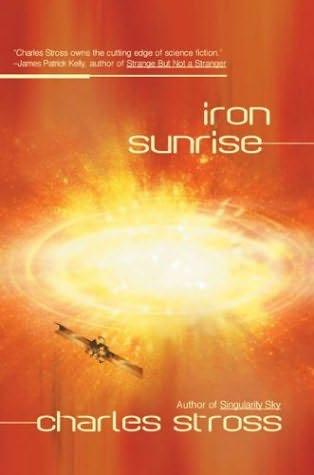
Iron Sunrise
by
Stross, Charles
Published 28 Oct 2004
Jeremy was staring at her so she grimaced horribly at him. He jumped back, right into the wall, and his mother glared at him. “Causal channels don’t work after a jump outside their original light cone: they’re instantaneous communicators, but they don’t violate causality. Move the entangled quantum dots apart via FTL and you break the quantum entanglement they rely on. As I speak to you through one that is wired into your access implant, and that is how you speak to me, I will be out of contact for some time after you arrive. However you are in no danger as long as you remain in the evacuation area and do nothing to attract attention.” She rolled her eyes.
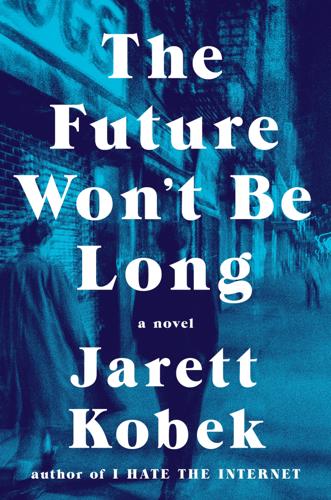
The Future Won't Be Long
by
Jarett Kobek
Published 15 Aug 2017
They said hello, smiling, innocent, angelic. Flushed faces. The rife humidity of sex hung over the apartment. But what could I say? I hadn’t one inch of proof. I couldn’t go and smell the sheets, could I? Months later, on a January night, the universe revealed its fractal nature, sucking me into a fourth-dimensional quantum entanglement with this illicit rendezvous. I’d come home with the hope of getting some writing done. Unlocking the front door and going inside, I saw Jon’s dirty denim jacket over a kitchen chair. Adeline’s door was closed. I assumed they were in her bed, busy with their drab vanilla flavor of hetero love.

Aurora
by
Kim Stanley Robinson
Published 6 Jul 2015
Problem of deceleration really quite severe, given our tremendous speed. Analogy describing the problem, from out of the classic literature on the subject: it is as if one is trying to stop a bullet with tissue paper. Quite an eye-opener of an analogy. Exotic physics, for example creating drag against dark matter, or putting dark energy to use, or quantum entangling the ship with slower versions of the ship, or with large gravity wells in parallel universes, etc.: these are all impractical at best. Wishes. Fantasies. Pie in the sky. Which is a mysterious metaphor. Food from nowhere? Land of Cockaigne? People used to be hungry often, as they were in the last years of wakefulness in the ship.

Connectography: Mapping the Future of Global Civilization
by
Parag Khanna
Published 18 Apr 2016
Data can be filtered and blocked; it also fragments into locked and coded packets that reassemble only for the intended recipient. Everything that is digitized can simultaneously appear in multiple places, whether a book, music, or even a “live” event. In the quest to compute more data faster than ever, scientists are applying the principles of quantum entanglement and super-positioning to multiply the capacity of photons to transmit data. Map 34, corresponding to this chapter, appears in the map insert. Yet while the increasingly borderless supply chain world was born out of the state system, the Internet seems to have been born borderless but is acquiring the trappings of interstate divisions.

Lifespan: Why We Age—and Why We Don't Have To
by
David A. Sinclair
and
Matthew D. Laplante
Published 9 Sep 2019
We can assume that if explorers from Maffei 1 ever make the trip to visit us, they’ll be from an exceptionally advanced society. I expect they’ll have a few questions, for they will want to know how far we have advanced, too. First, I believe, they’ll be curious about the easy things: Have we figured out pi to a million decimal places? The speed of light? The fact that mass and energy are the same thing? Quantum entanglement? The age of the universe? Evolution? Next they’ll ask us about some of the harder stuff: Have we learned to use the resources available on our planet wisely? We’ll get passing marks on that one, I suppose, as long as we don’t mention lead pipes, nuclear bombs, and Furbys. Have we done so sustainably?

2312
by
Kim Stanley Robinson
Published 22 May 2012
Swan had indeed pressed the pad under the skin on the right side of her neck. “Yes.” “Very good. All right, now we can talk a little more openly. Tell me, when your qube is on, is it recording what you hear and see?” “Normally, yes. Of course.” “And does it have direct contact with any other qubes?” “Direct contact? Do you mean quantum entanglement?” “No, no. Decoherence makes that impossible, we are told. I only mean radio contact.” “Well, Pauline has a radio receiver and transmitter, but I select what goes in and out.” “Can you be sure of that?” “Yes, I think so. I set the tasks and she does them. I can check everything she’s done in her records.”

Velocity Weapon
by
Megan E. O'Keefe
Published 10 Jun 2019
Until Cepko showed her what he’d given him, and they put the pieces together. How long, he wondered, until she said goodbye to him in her own heart, and made her plans—plans he’d already set in motion—to escape. He’d never been a spiritual man, but part of him wished he could feel that moment. Some sort of quantum entanglement of brain waves between brother and sister—a mutual farewell, an ache acknowledged and answered. But until she was safely away, he had his part to play. And that meant smiling at the shit-eating grin on Slatter’s face. “Speaker Greeve,” Slatter said as he swung out of the cart. “You’ve been, perhaps, taking the Speaker part of your title too literally.
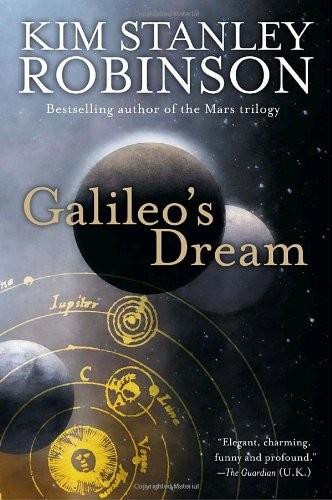
Galileo's Dream
by
Kim Stanley Robinson
Published 29 Dec 2009
Lots of them at once, or almost at once.” “Yes, potential moments, that wink into being when the three waves peak. The vector nature of the manifold also accounts for many of the temporal effects we experience, like entropy, action at a distance, temporal waves and their resonance and interference effects, and of course quantum entanglement and bilocation, which you yourself are experiencing because of the technology that was developed to move epileptically. In terms of what we sense, fluctuations in this manifold also account for most of our dreams, as well as less common sensations like involuntary memory, foresight, déjà vu, presque vu, jamais vu, nostalgia, precognition, Rückgriffe, Schwanung, paralipomena, mystical union with the eternal or the One, and so on.”

Valley of Genius: The Uncensored History of Silicon Valley (As Told by the Hackers, Founders, and Freaks Who Made It Boom)
by
Adam Fisher
Published 9 Jul 2018
But the really amazing thing that I think is probably going to happen is that they all are going to do well. So, I’m a superoptimist. Kevin Kelly: What we’re really making here is something that is humanity plus: It’s us, plus the machines, plus the planet. Scott Hassan: I hope that these quantum entanglement systems will allow you to transmit information faster than the speed of light. If it happens, that’s going to allow us to colonize the whole entire galaxy, and other galaxies. If that’s actually, really possible, it’s going to be phenomenal, and that’s being developed right now. Kevin Kelly: Not only will our tools tell us about ourselves, but they also will inform us as we invent new versions of ourselves.
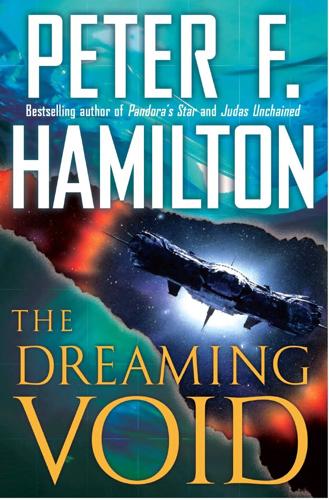
The Dreaming Void
by
Peter F. Hamilton
Published 1 Jan 2007
They gave him a magic pendant which allowed him to understand their paths and even join their communal mind, their Motherholme.” “Ozzie? You mean our Ozzie? The one we—” “Yes. Now, Ozzie being Ozzie, he broke open the pendant and figured out how the magic worked, that it wasn’t magic but quantum entanglement. So humans then started to produce gaiamotes. Our gaiafield is basically a poor copy of the Silfen communal mind.” “Right. So where does our ancestor come into this?” “Mellanie was also a Silfen friend, which actually involves a little more than just being given the pendant. Their Motherholme accepts your mind and shares its wisdom with you.

Accessory to War: The Unspoken Alliance Between Astrophysics and the Military
by
Neil Degrasse Tyson
and
Avis Lang
Published 10 Sep 2018
Ballistic missiles that merely pass through space but don’t achieve orbit are not forbidden. Antisatellite weapons launched from land, sea, or air are not forbidden. Space-based ballistic missile defense systems are not forbidden. The testing of antisatellite weapons in space is not forbidden. Orbital weapons based on cutting-edge physical principles (quantum entanglement, particle beams) would be permissible as long as they couldn’t be characterized as weapons of mass destruction. Parasitic microsatellites and space mines would not be forbidden. Vehicles that would descend from orbit to attack terrestrial targets would not be forbidden. Short-term “pop-up maneuvers” in space would be permissible.
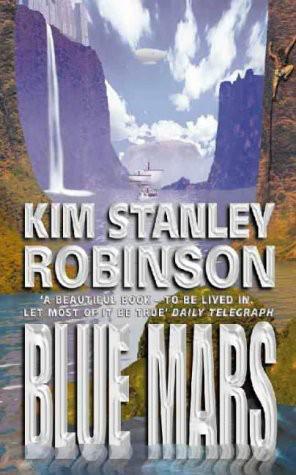
Blue Mars
by
Kim Stanley Robinson
Published 23 Oct 2010
So, not only was there simply more going on, it was also happening at such fine levels that quantum effects were certainly involved. Experimentation had made it clear that large-scale collective quantum phenomena were happening in every brain; there existed in the brain both global quantum coherence, and quantum entanglement between the various electrical states of the microtubules; and this meant that all the counterintuitive phenomena and sheer paradox of quantum reality were an integral part of consciousness. Indeed it was only very recently, by including the quantum effects in the cytoskeletons, that a team of French researchers had finally managed to put forth a plausible theory as to why general anesthetics worked, after all the centuries of blithely using them.